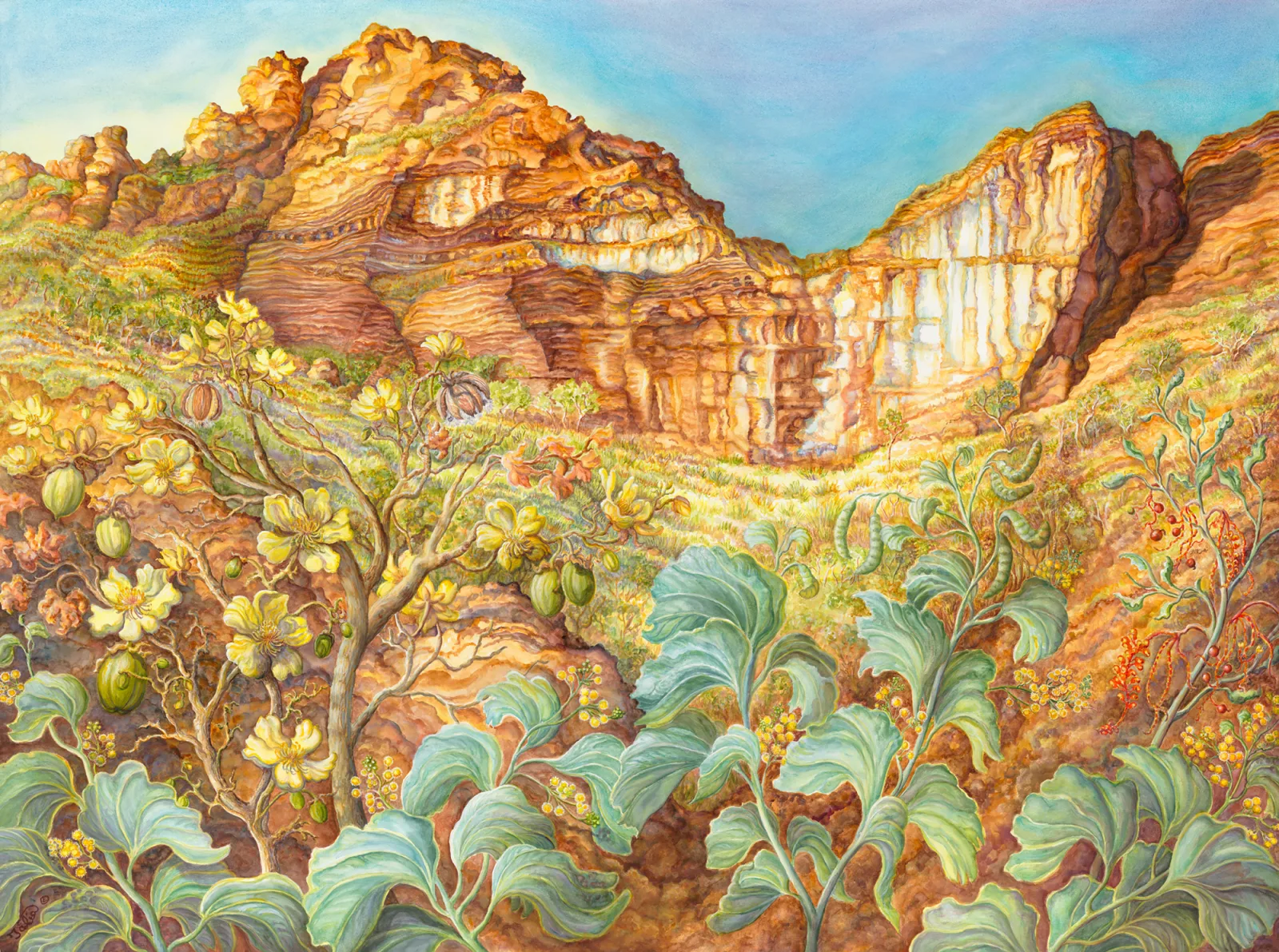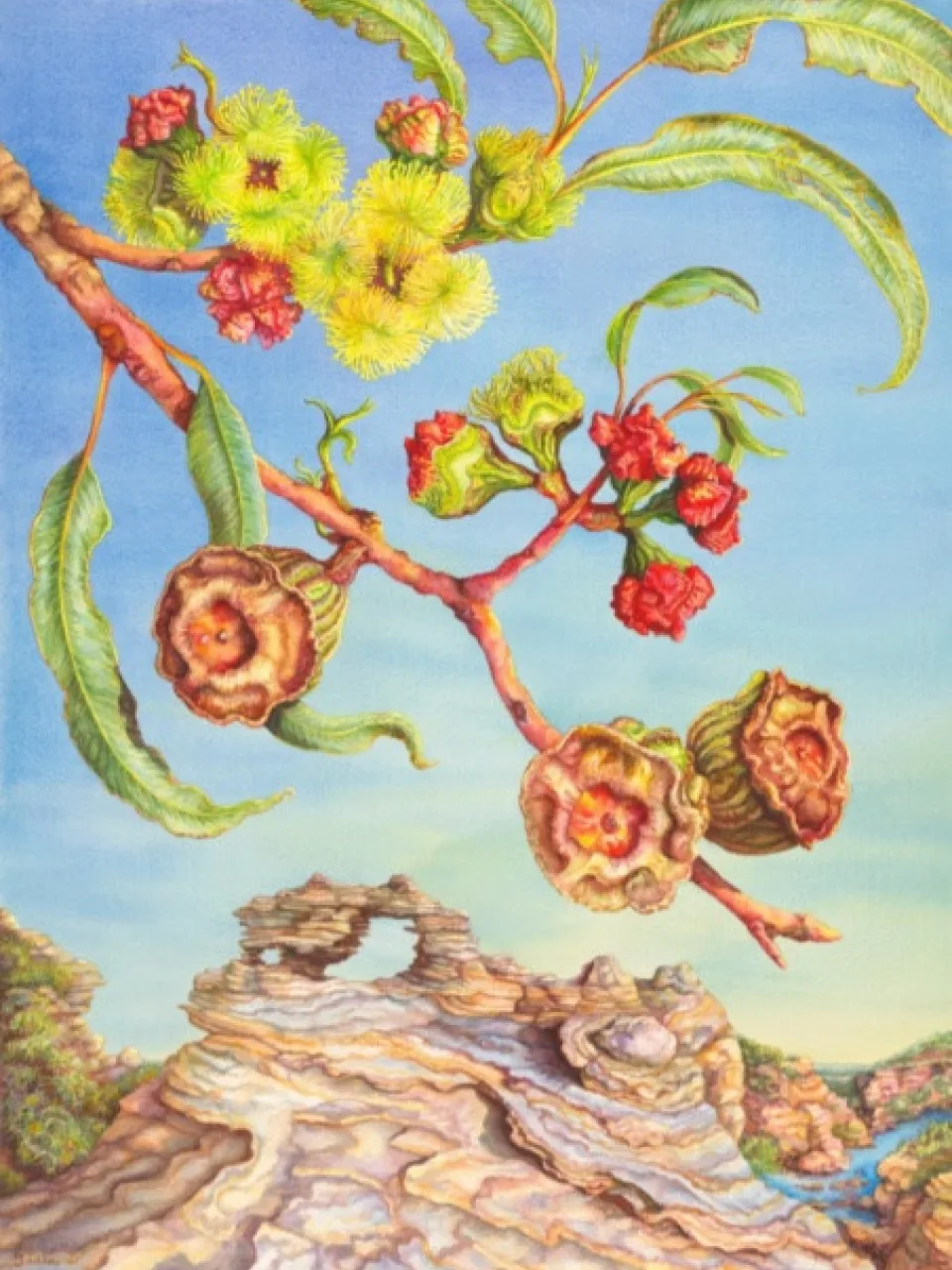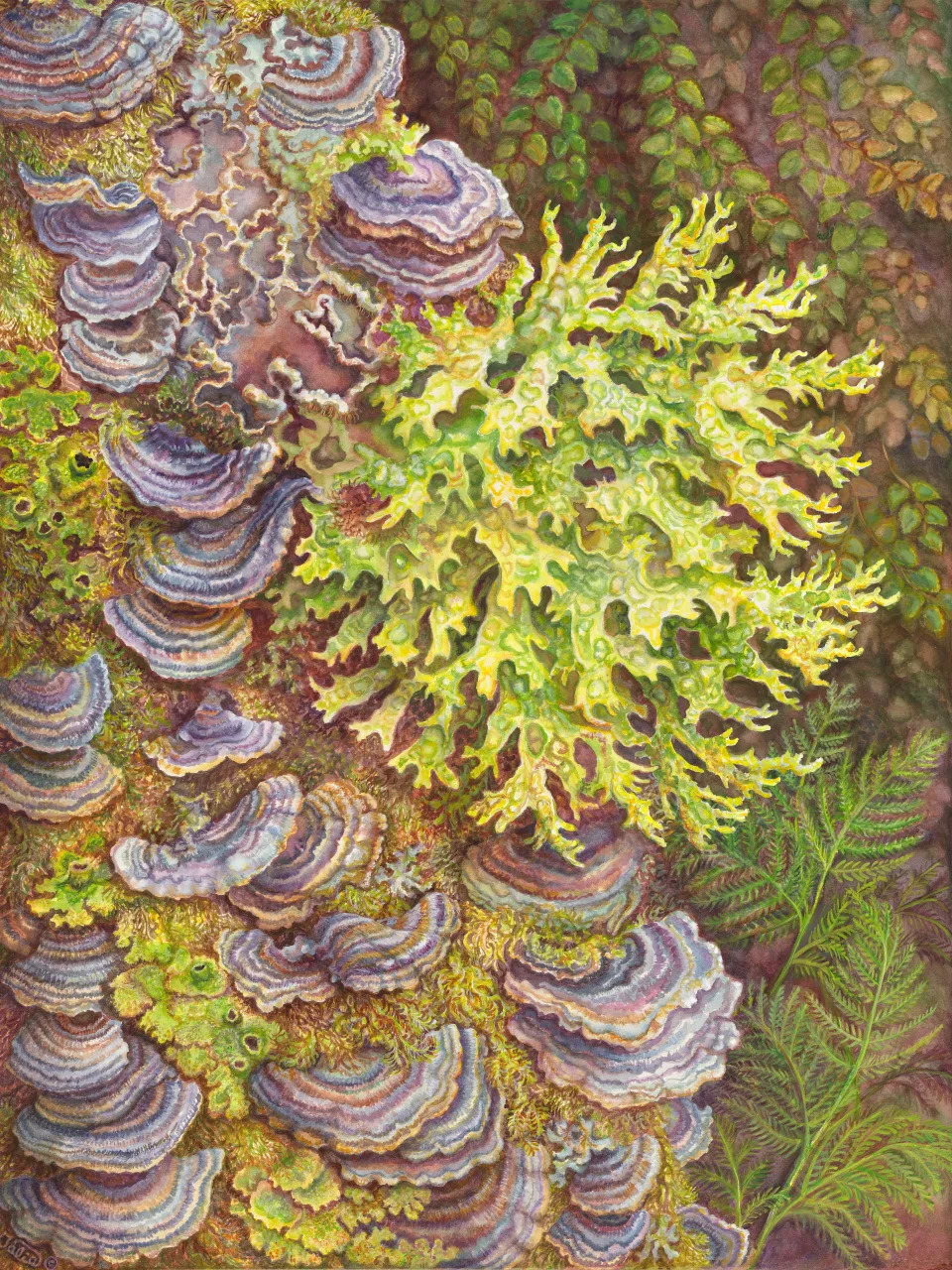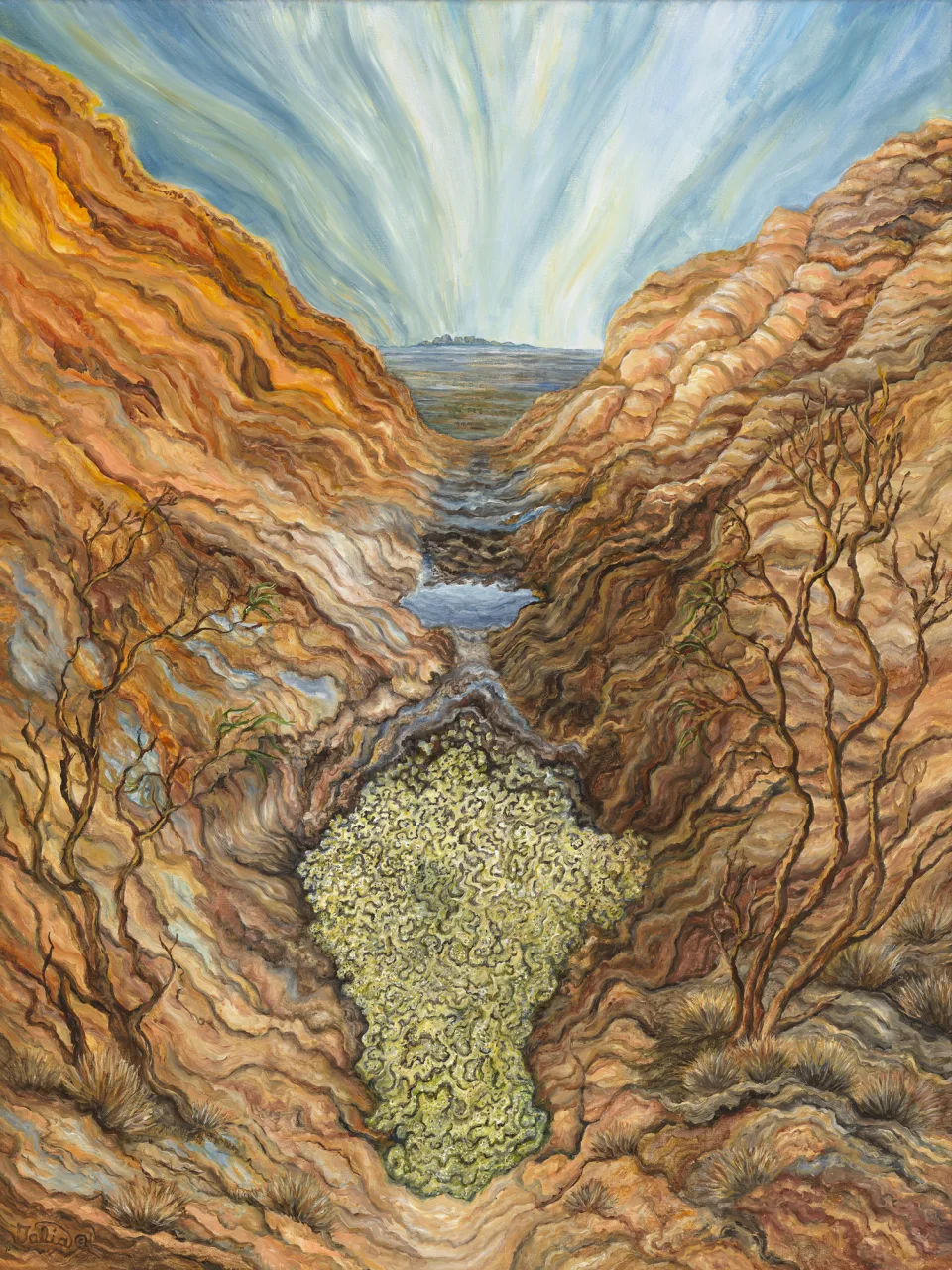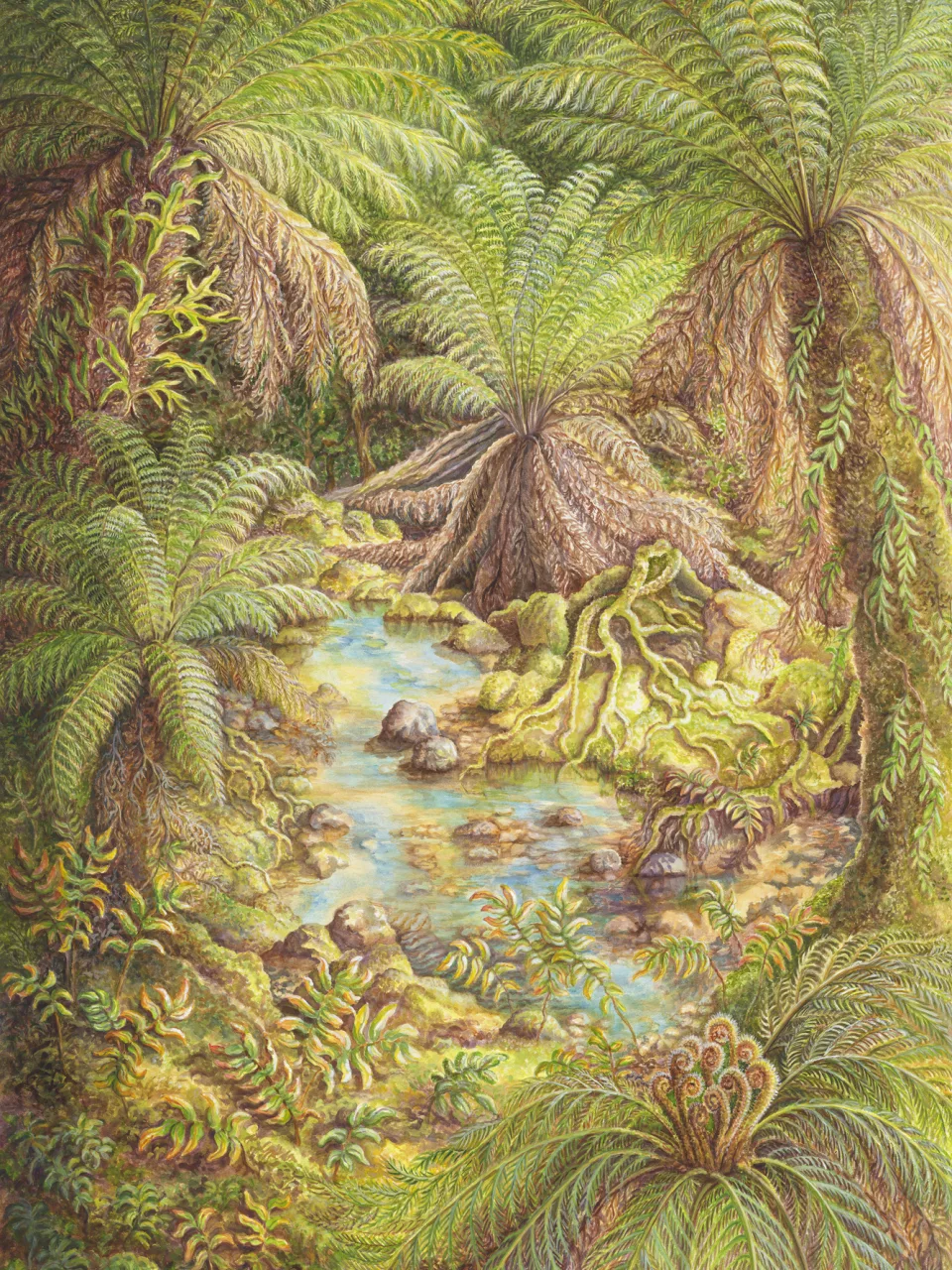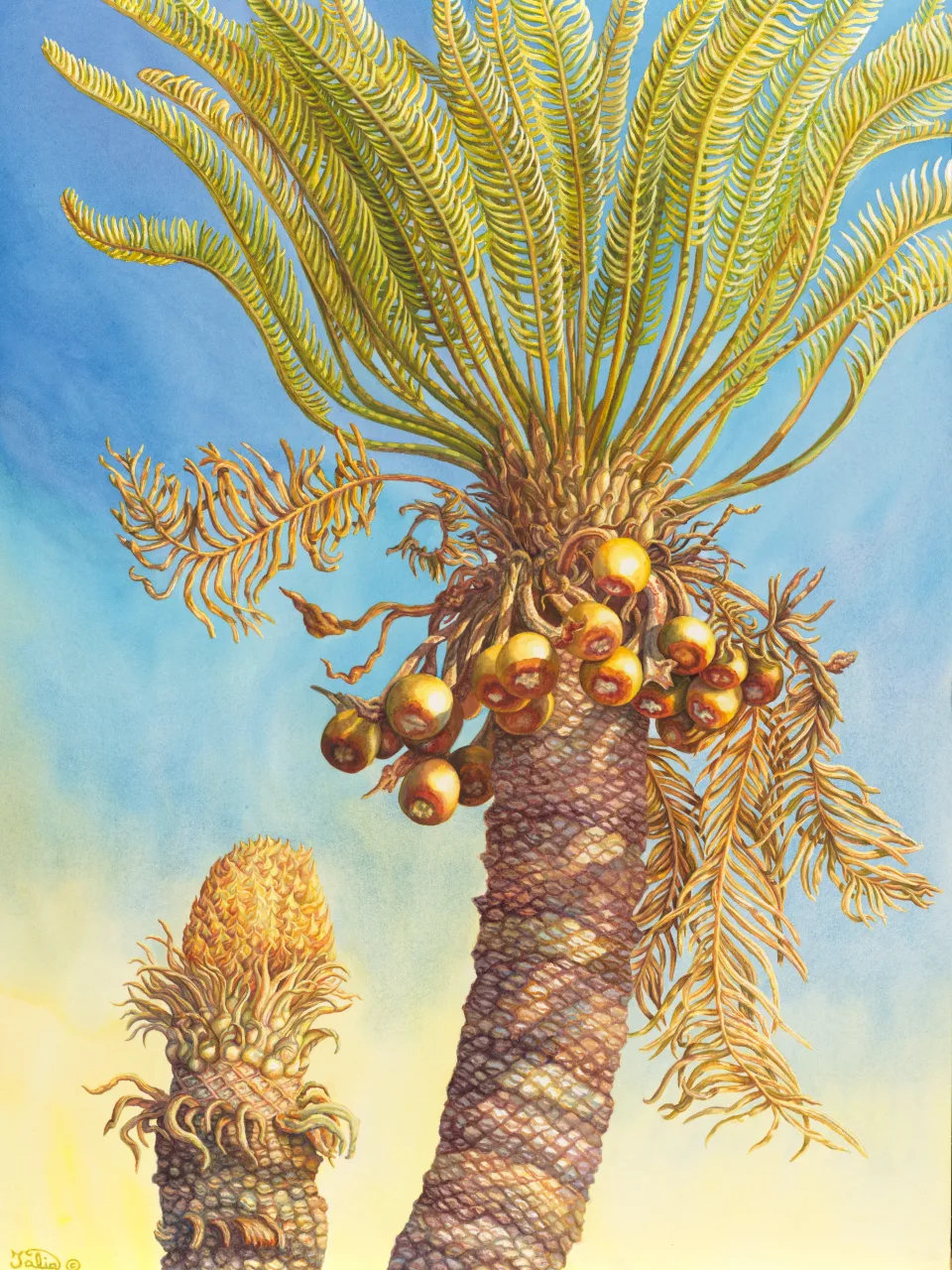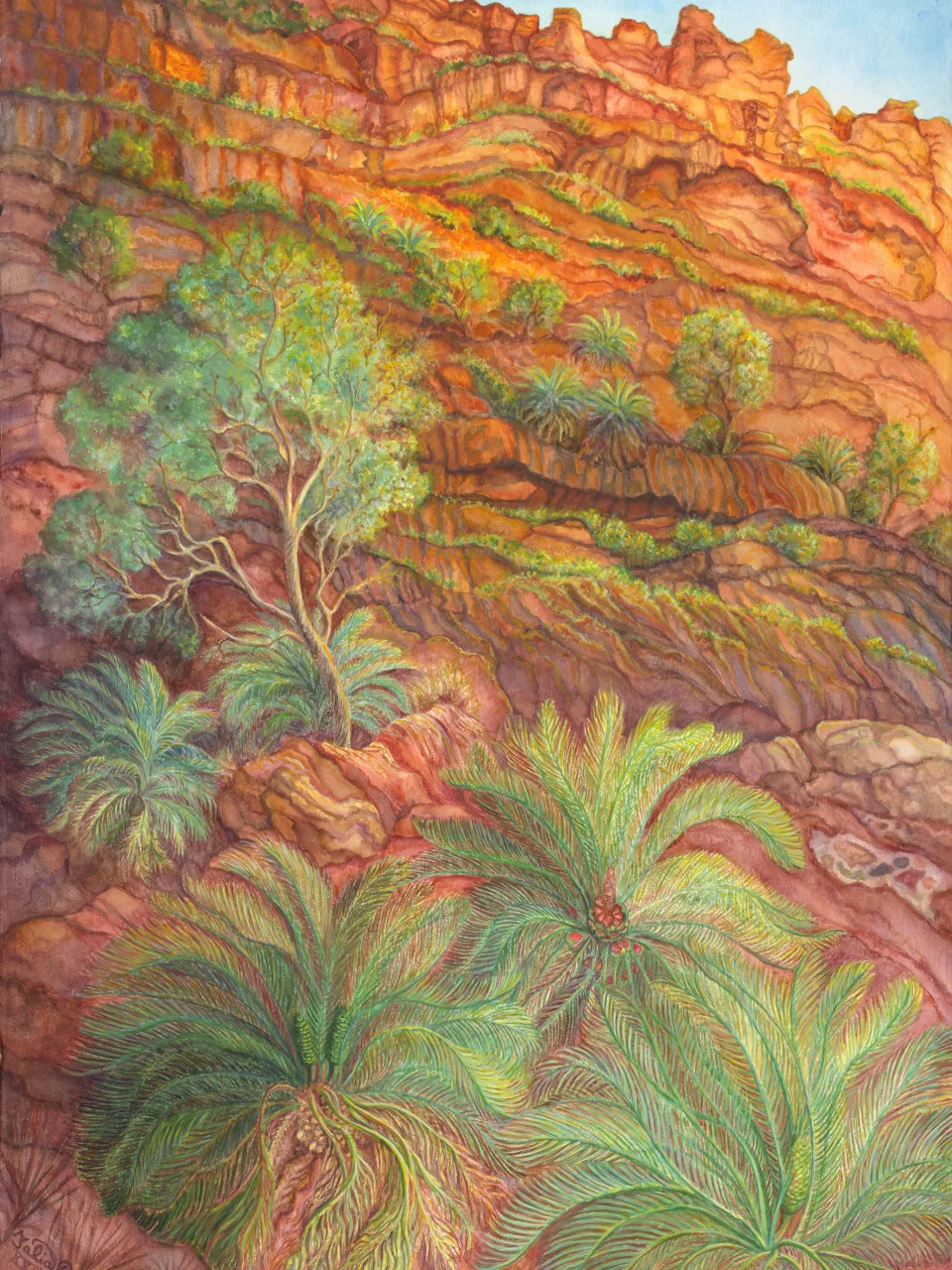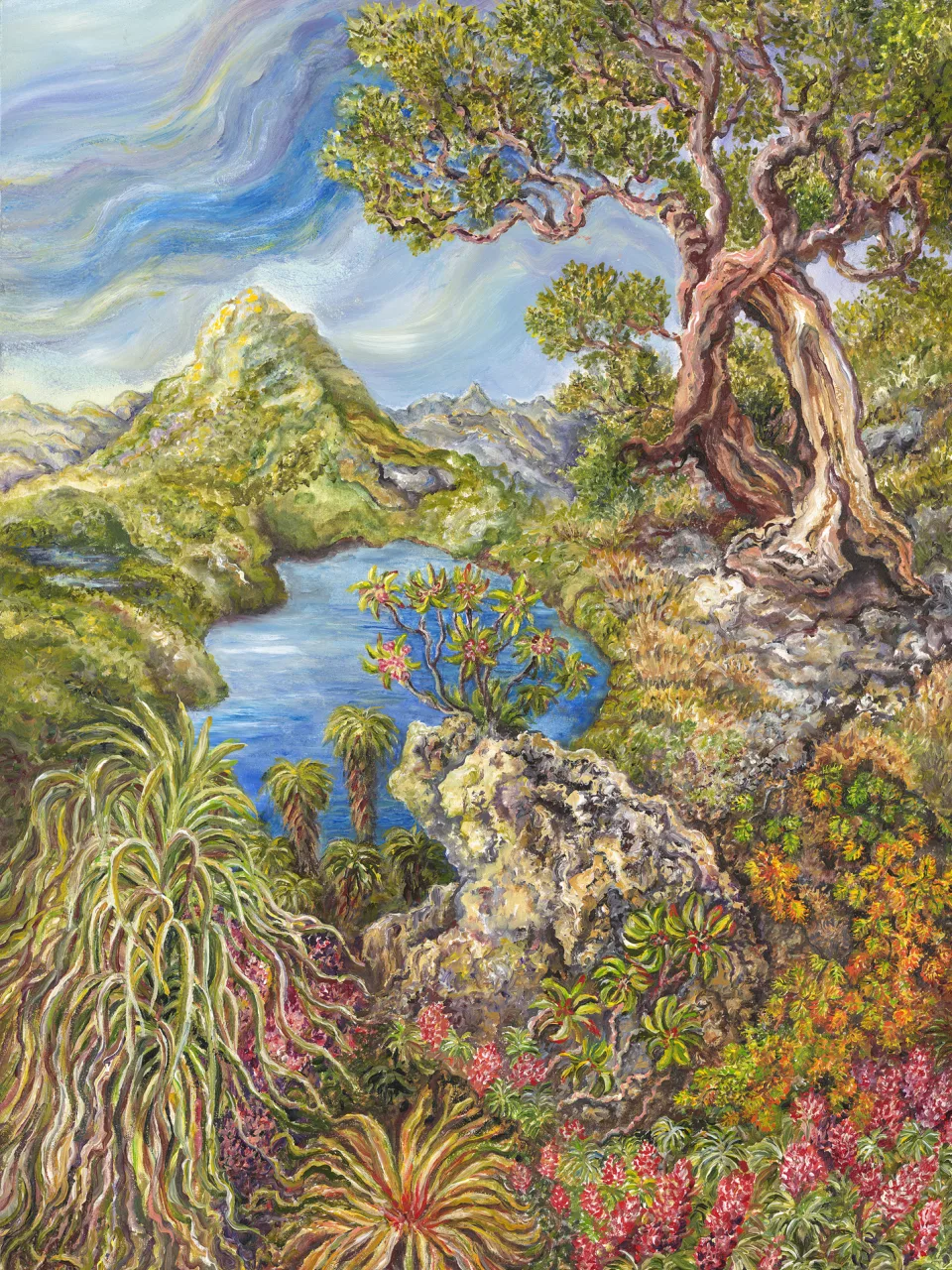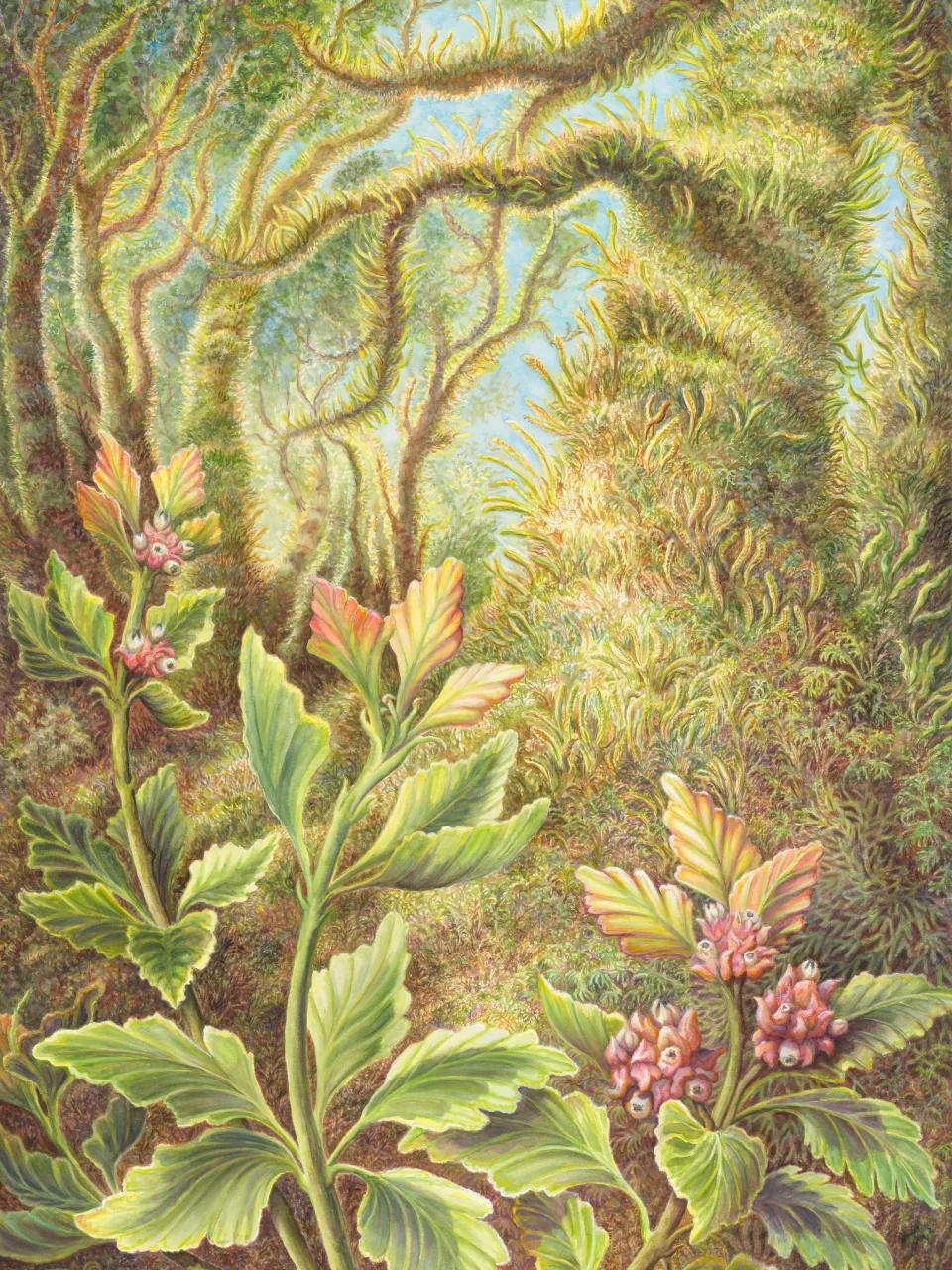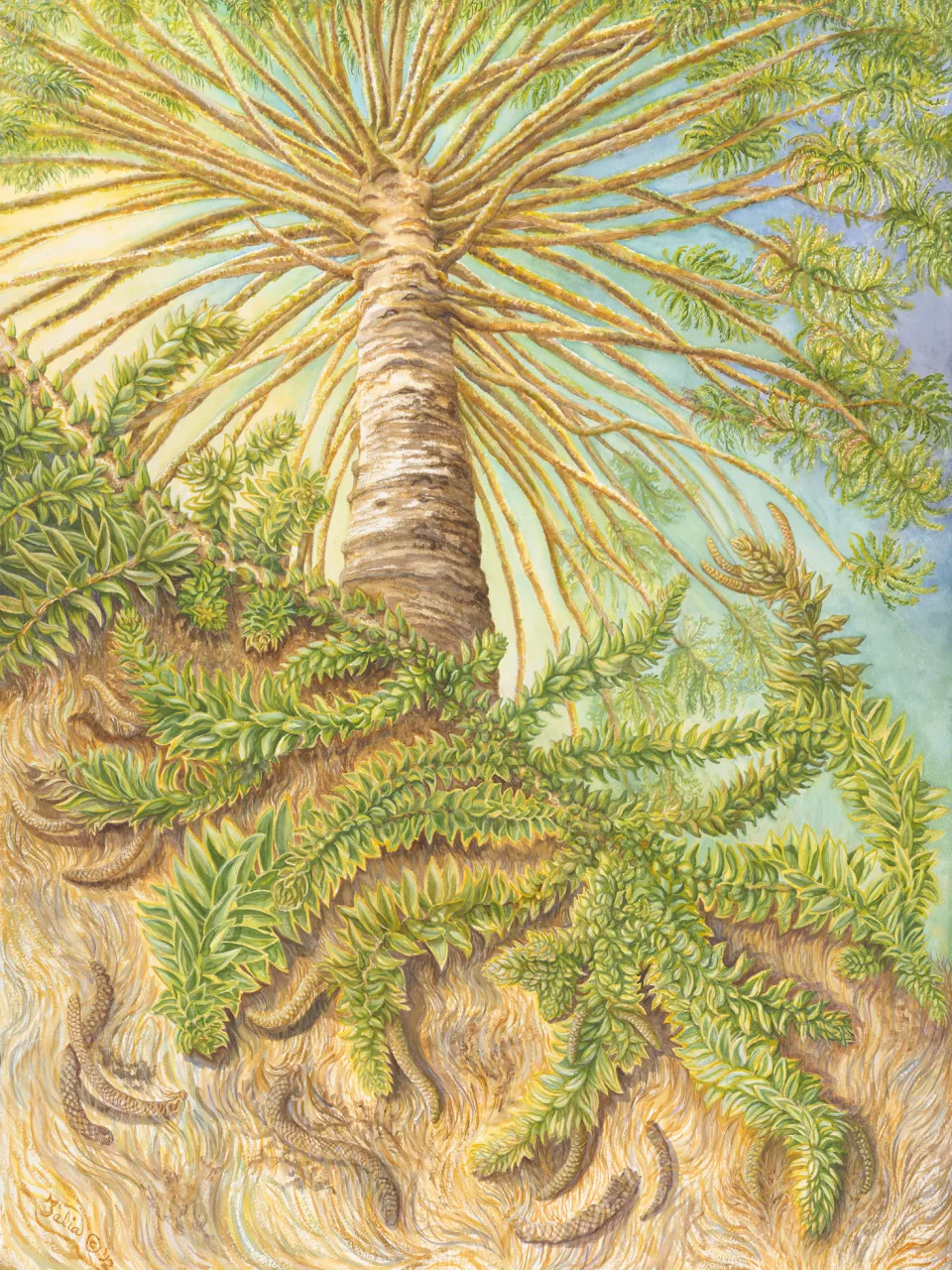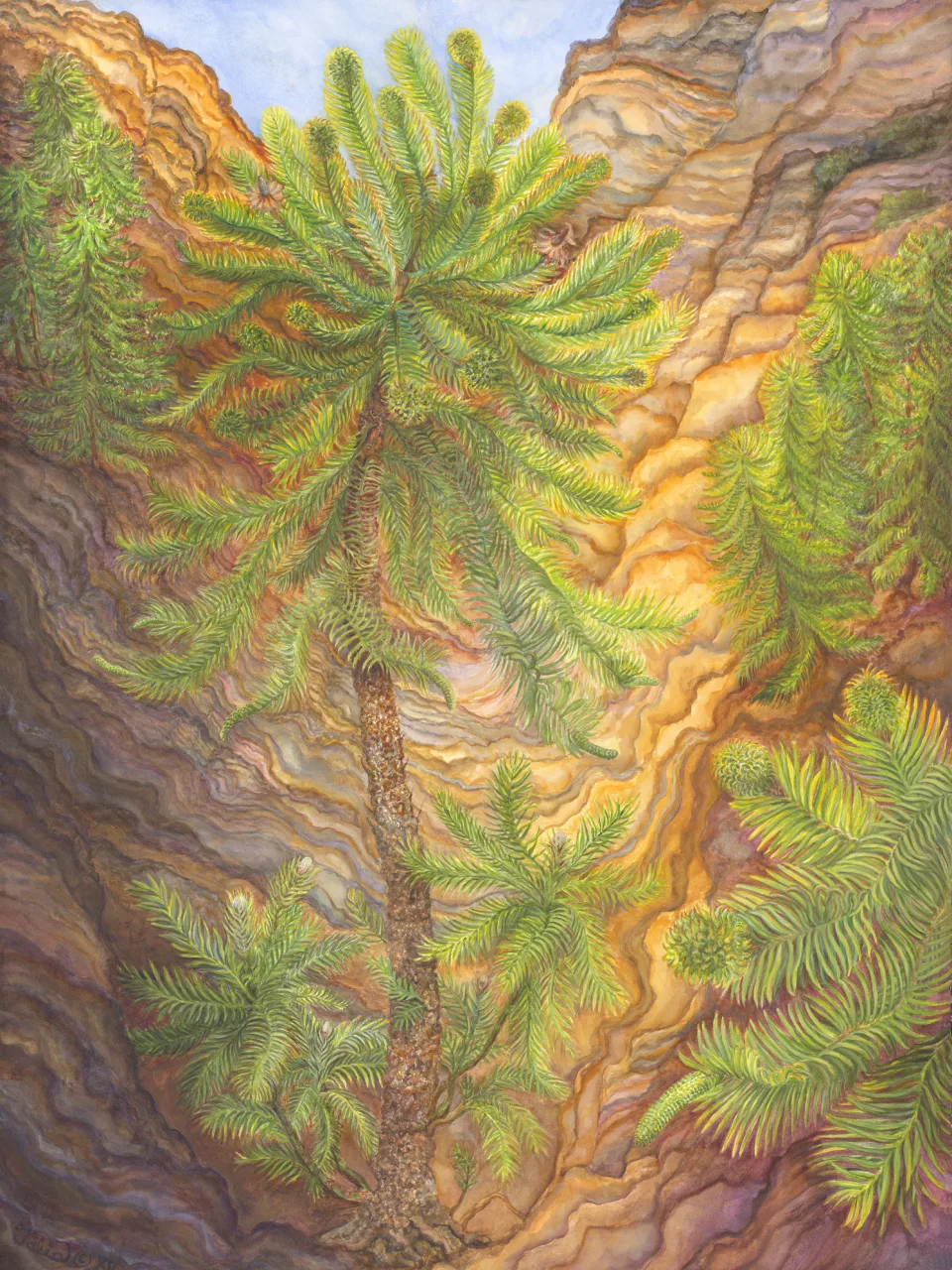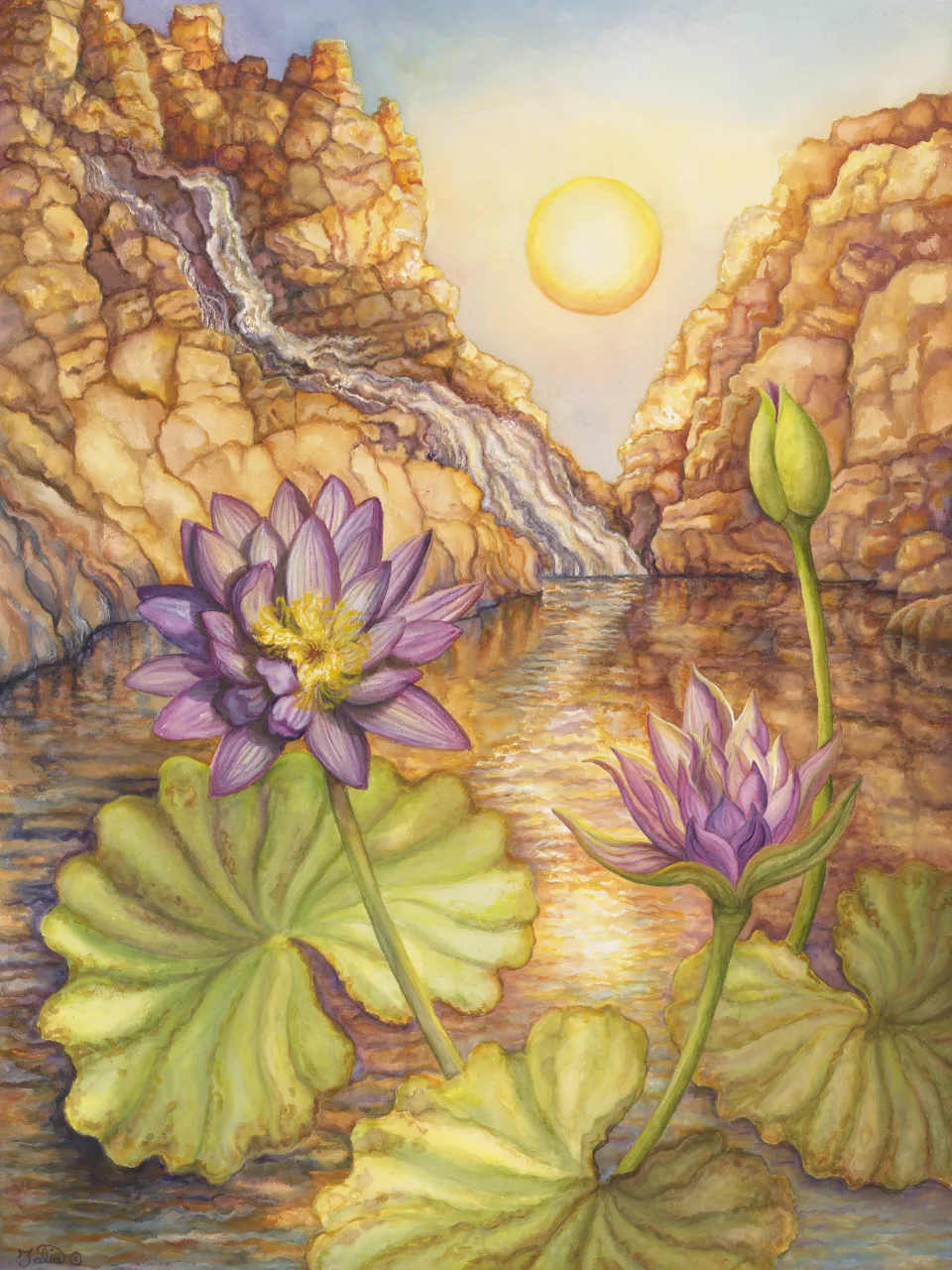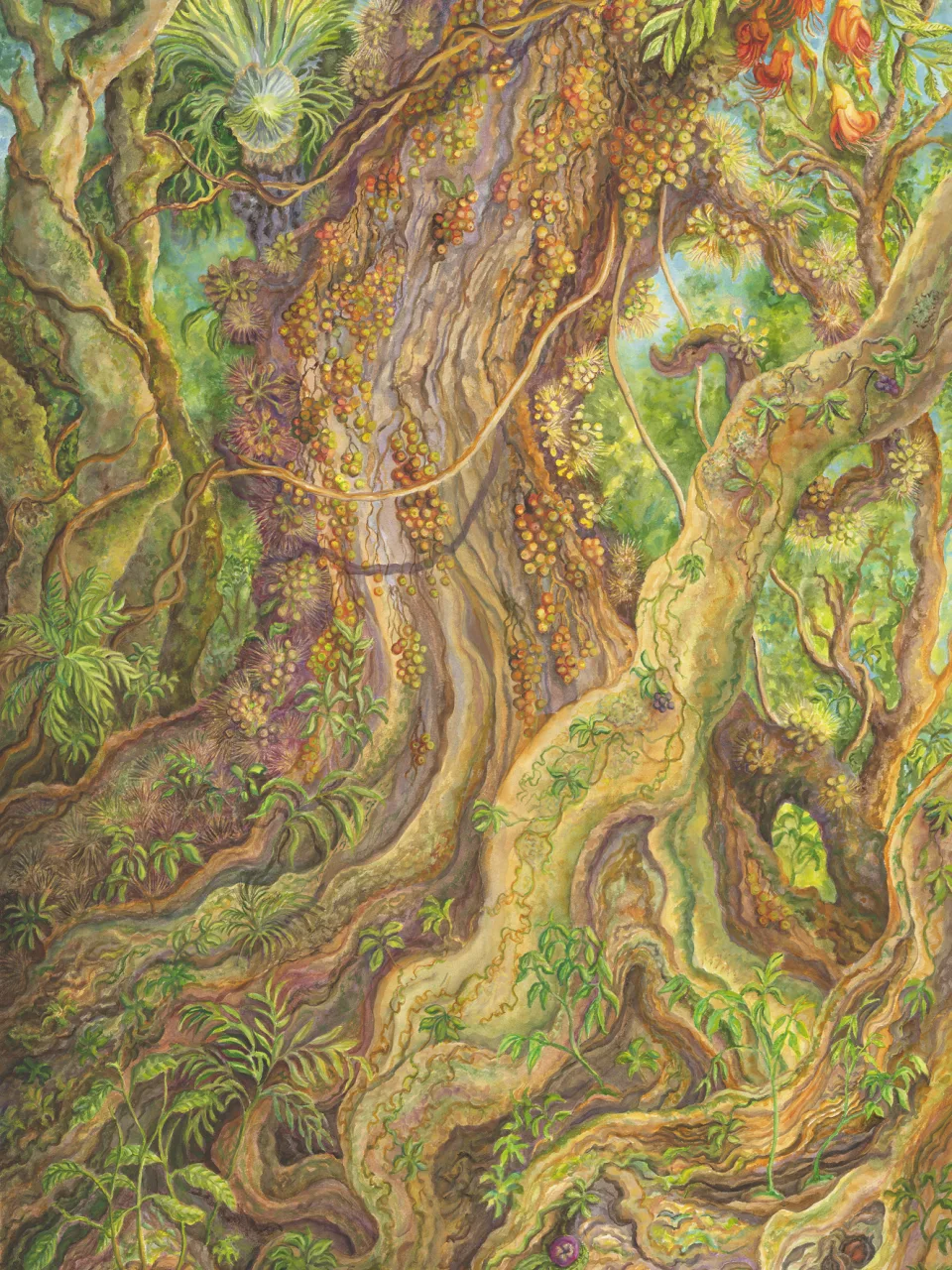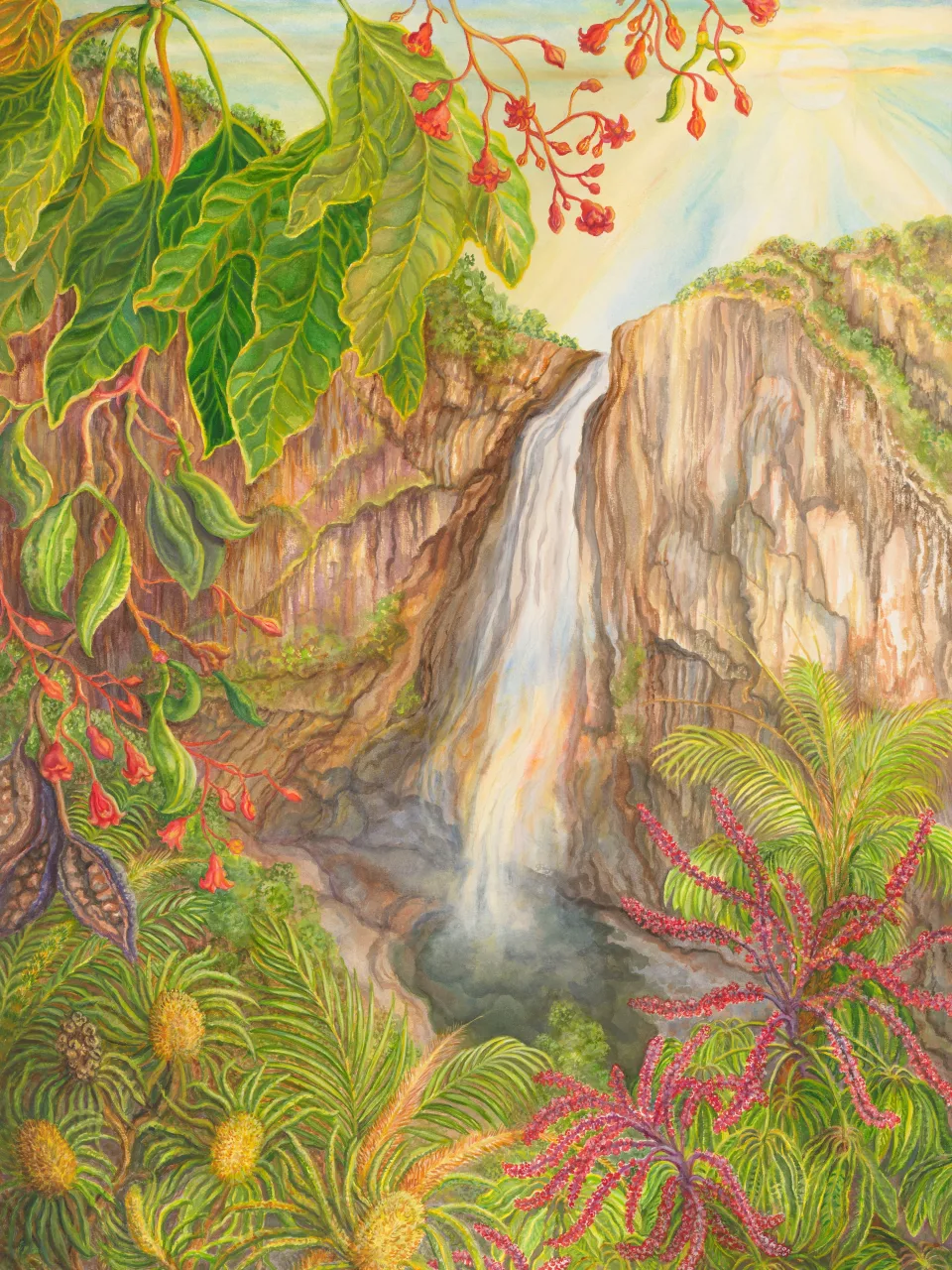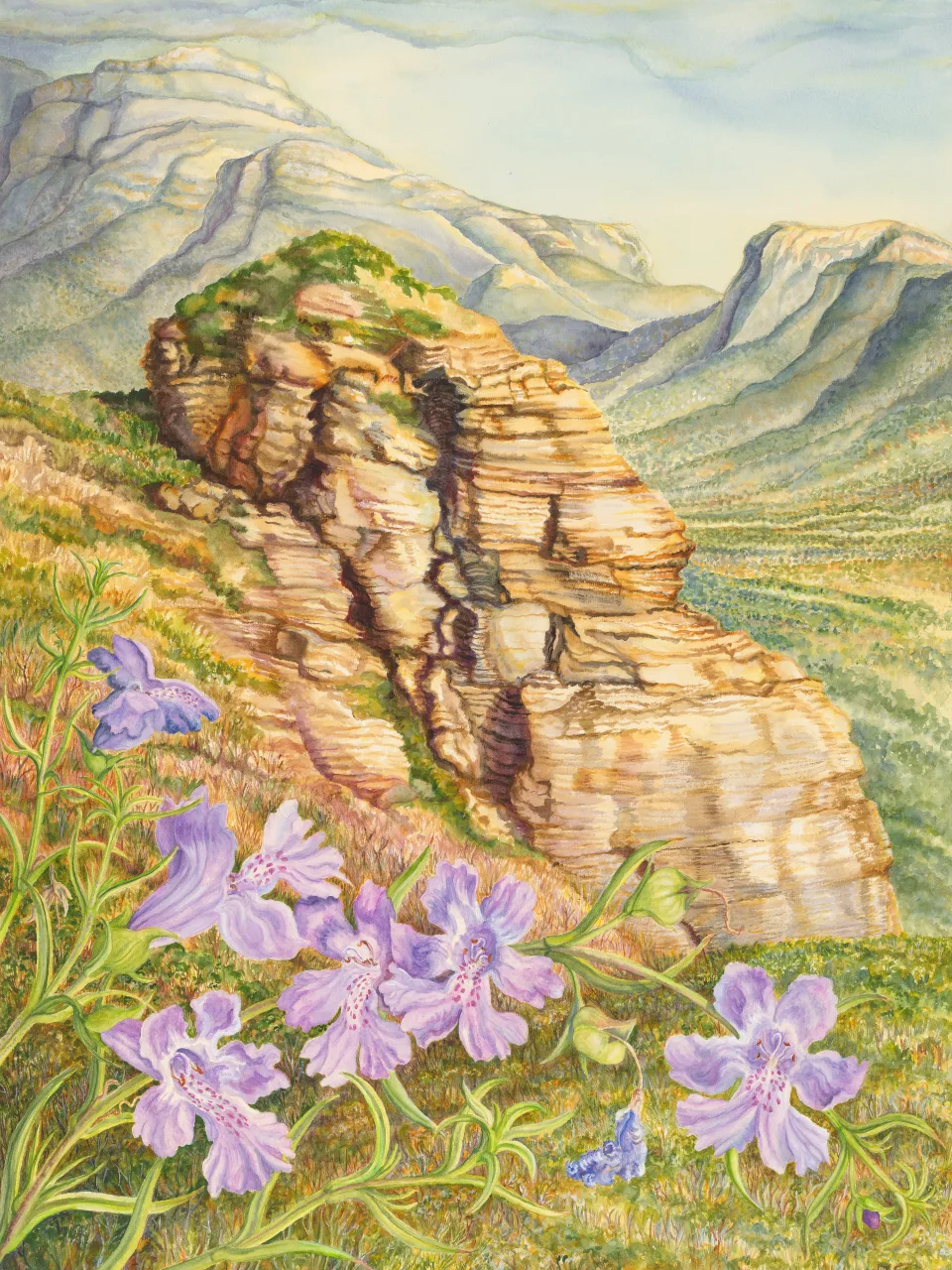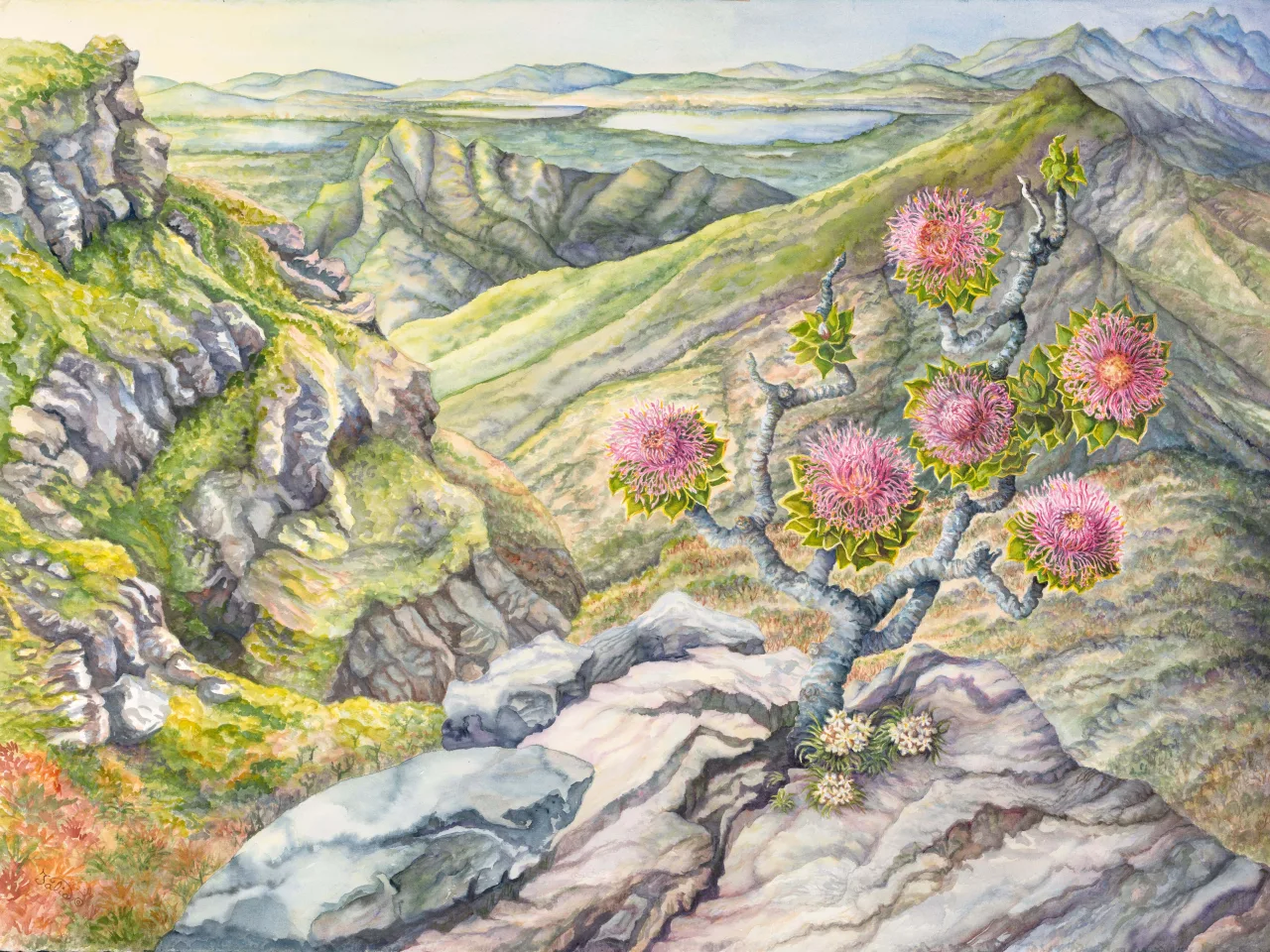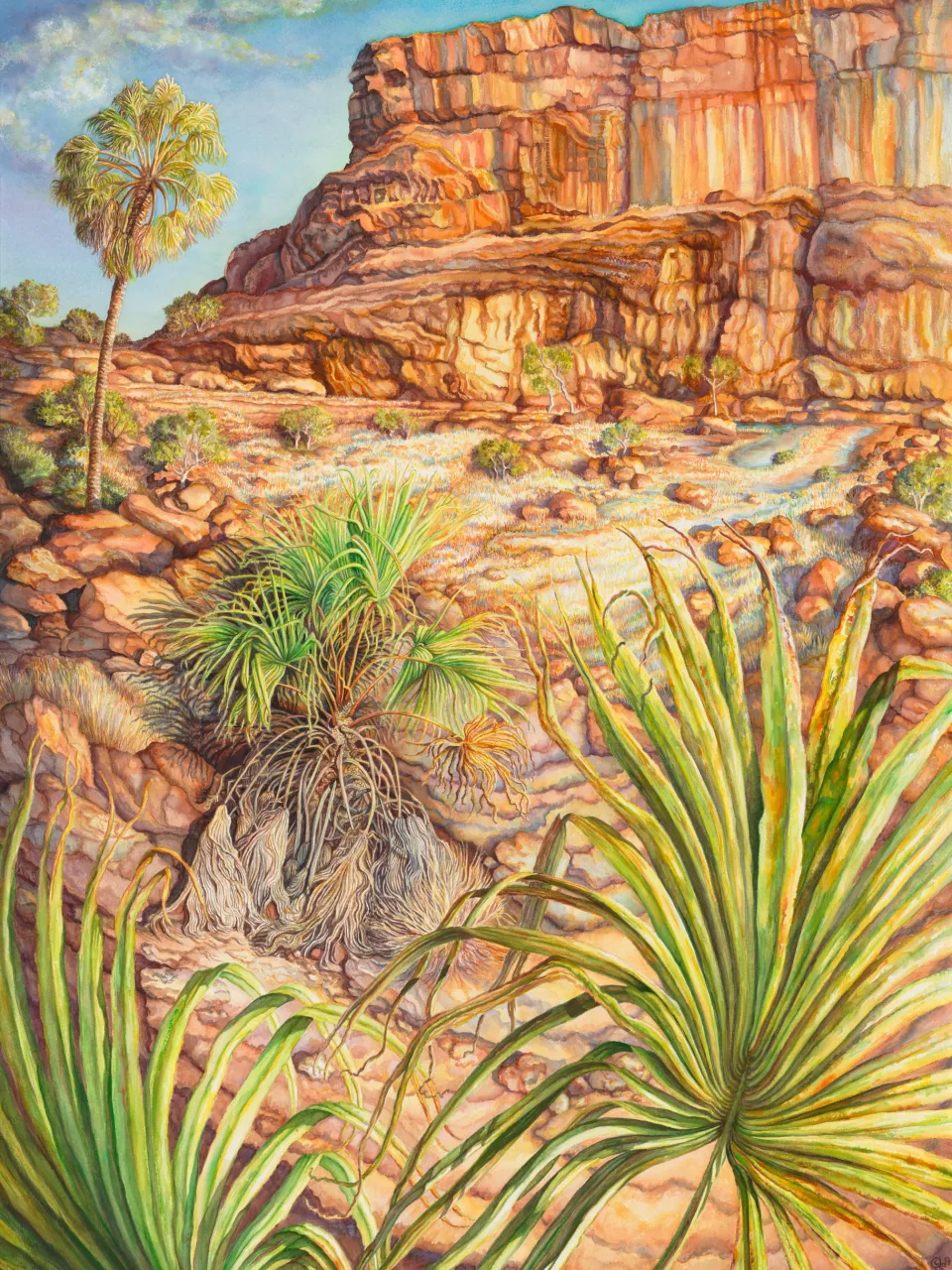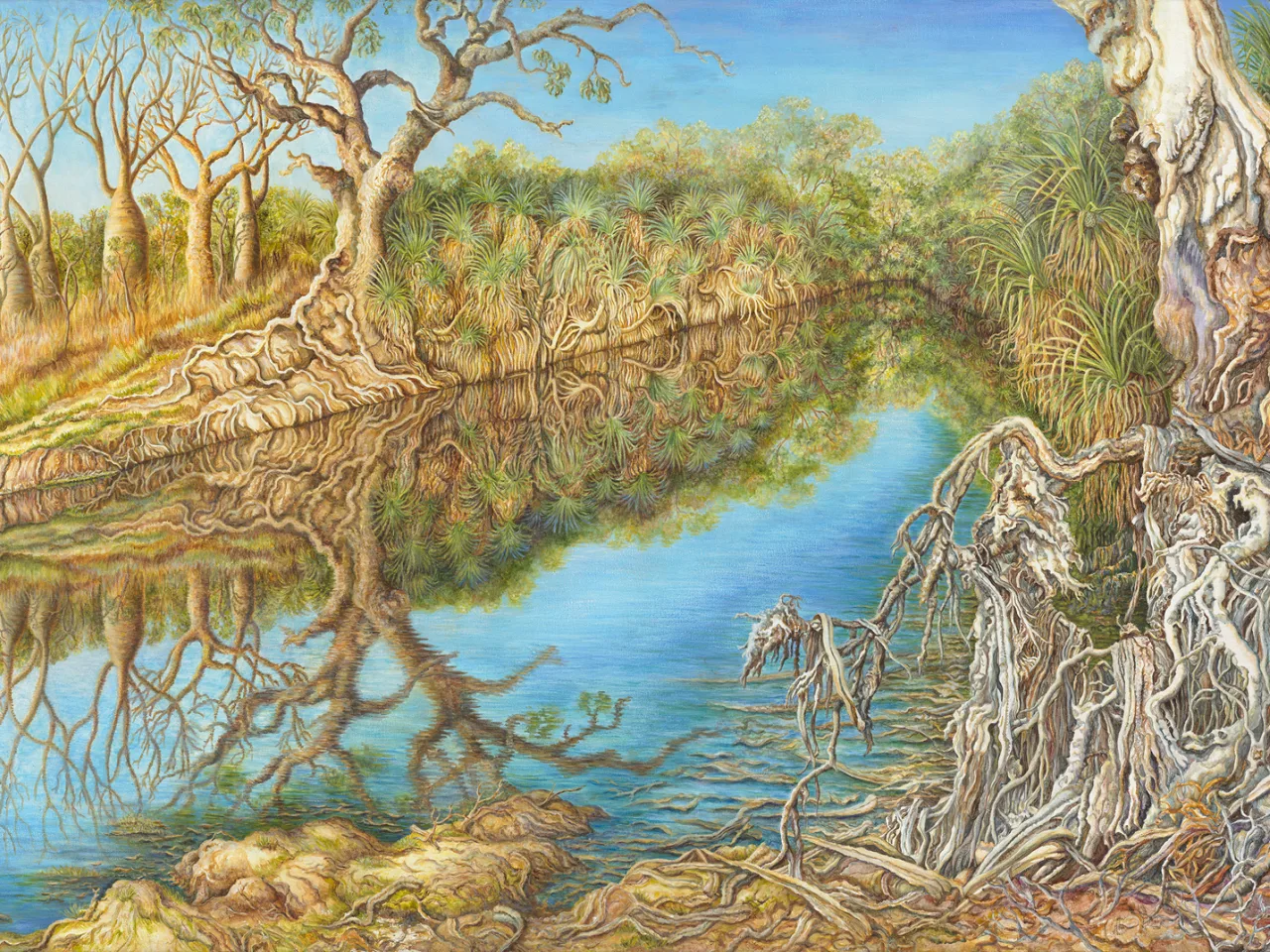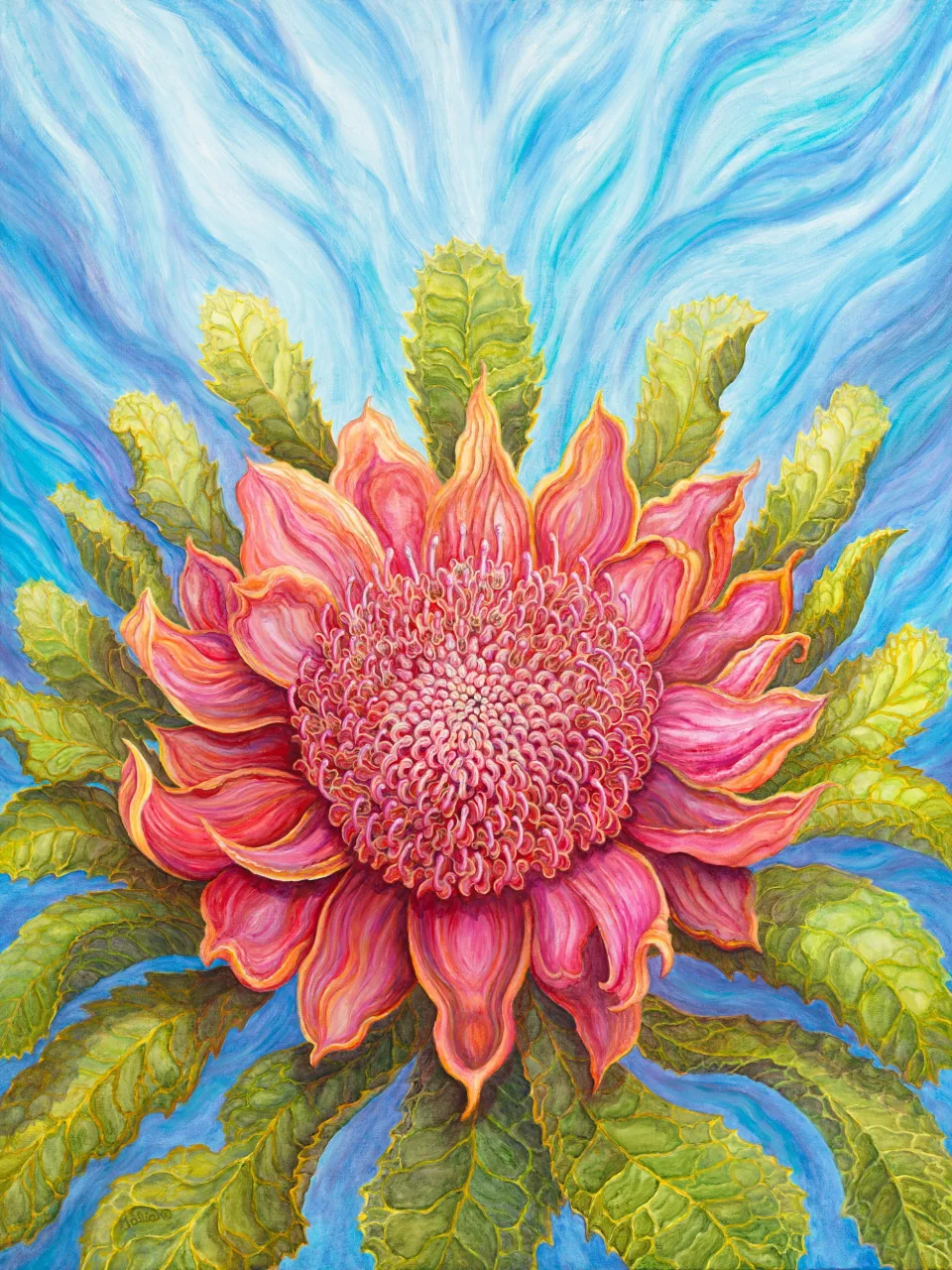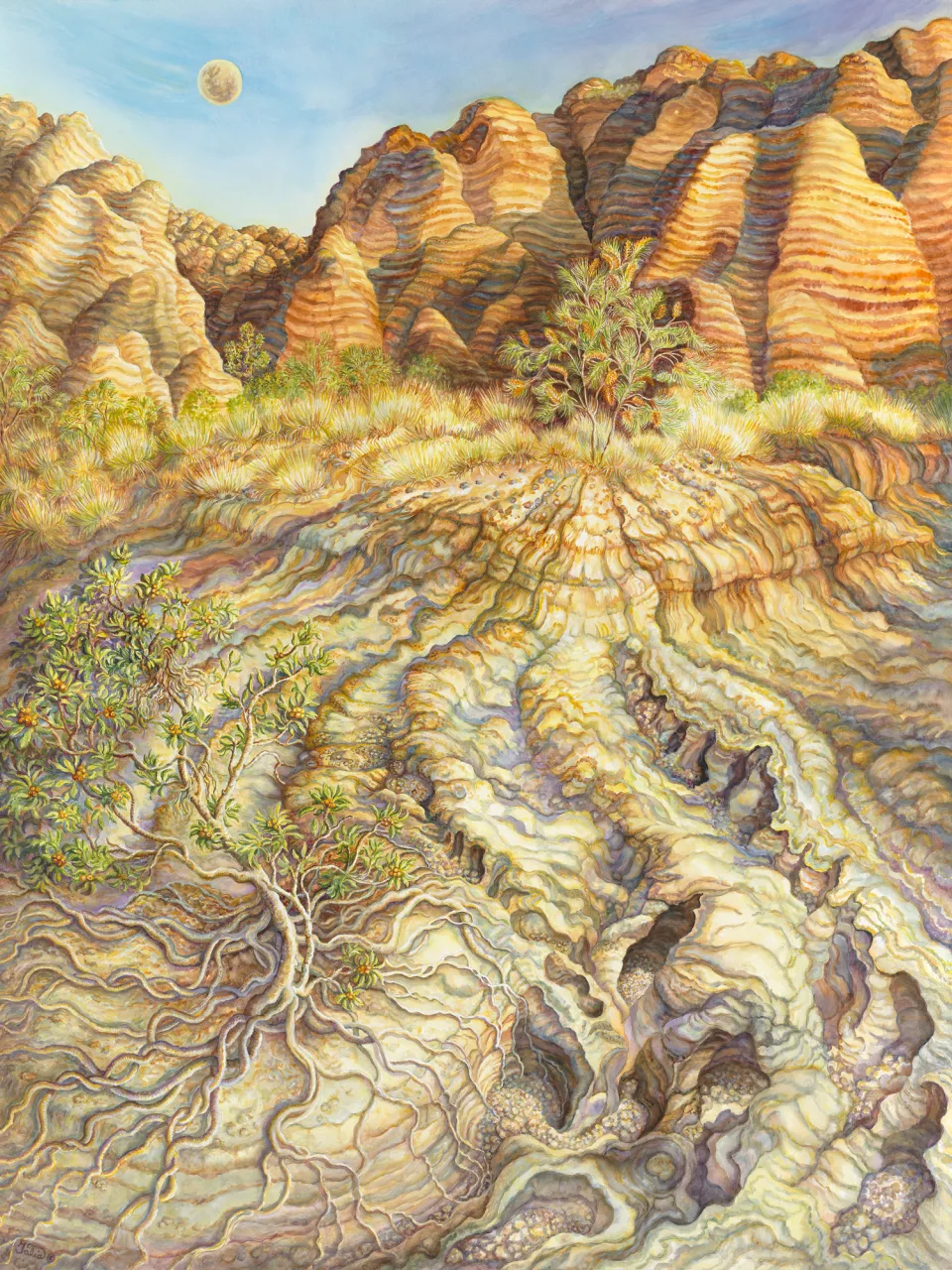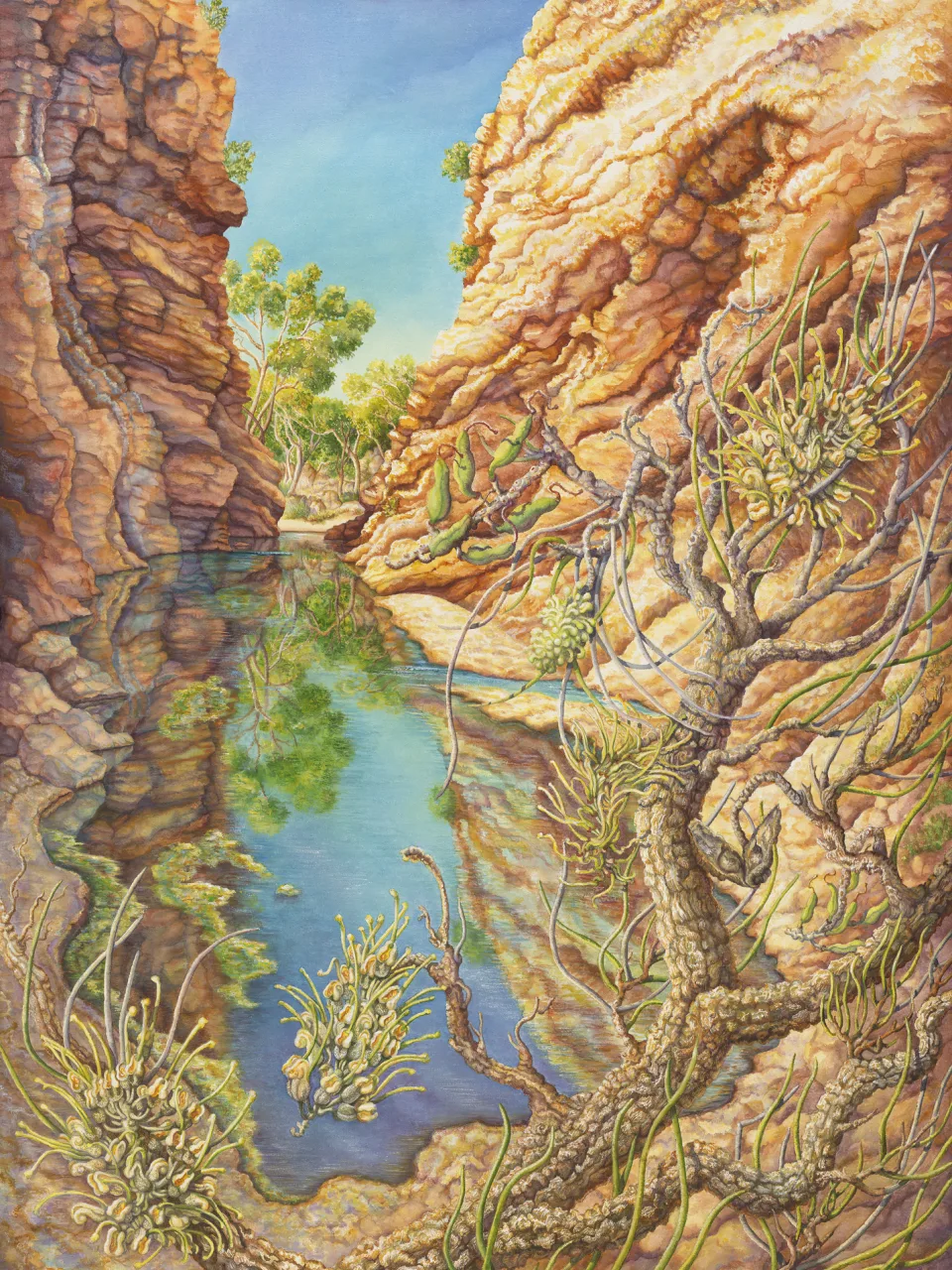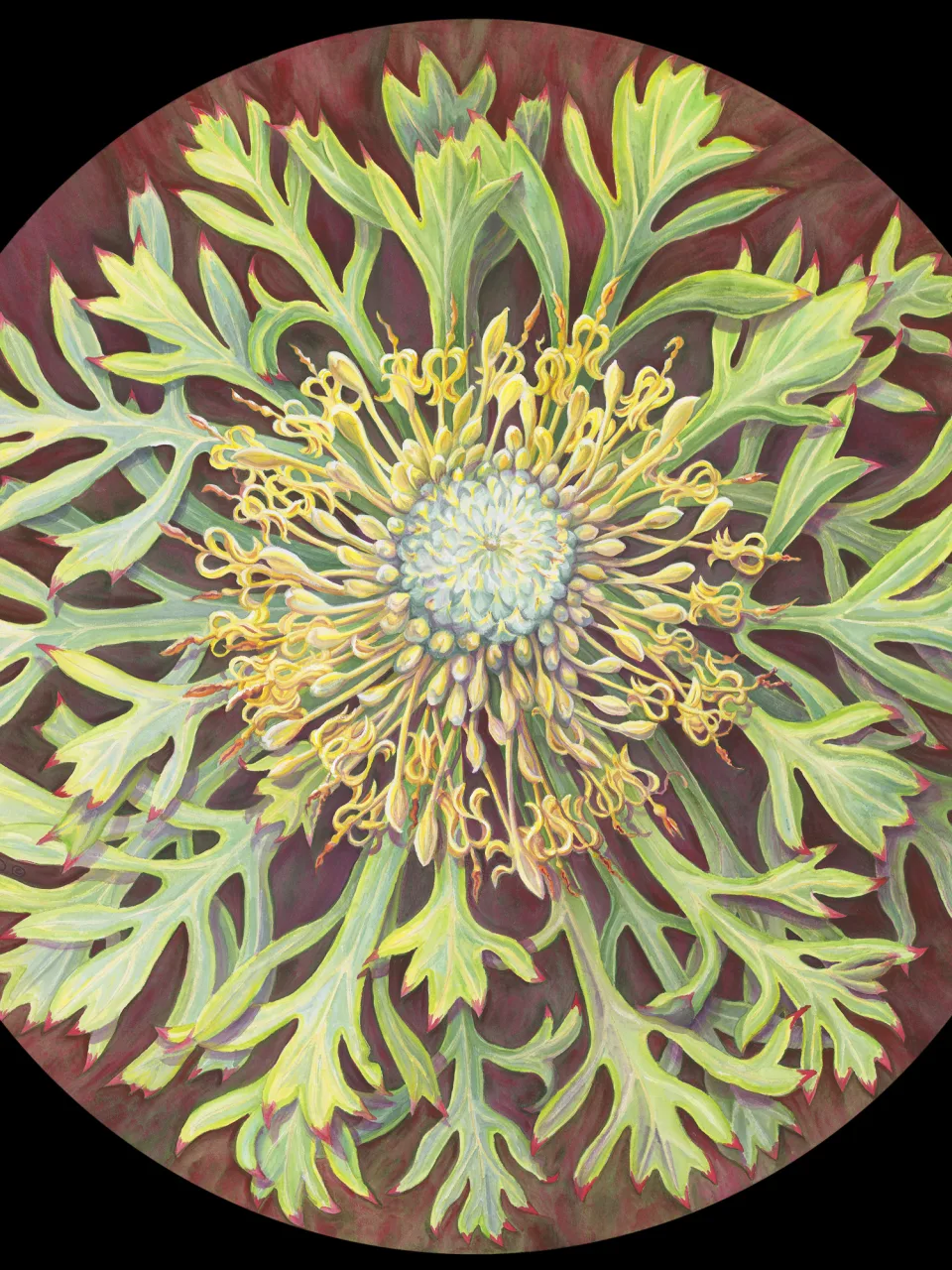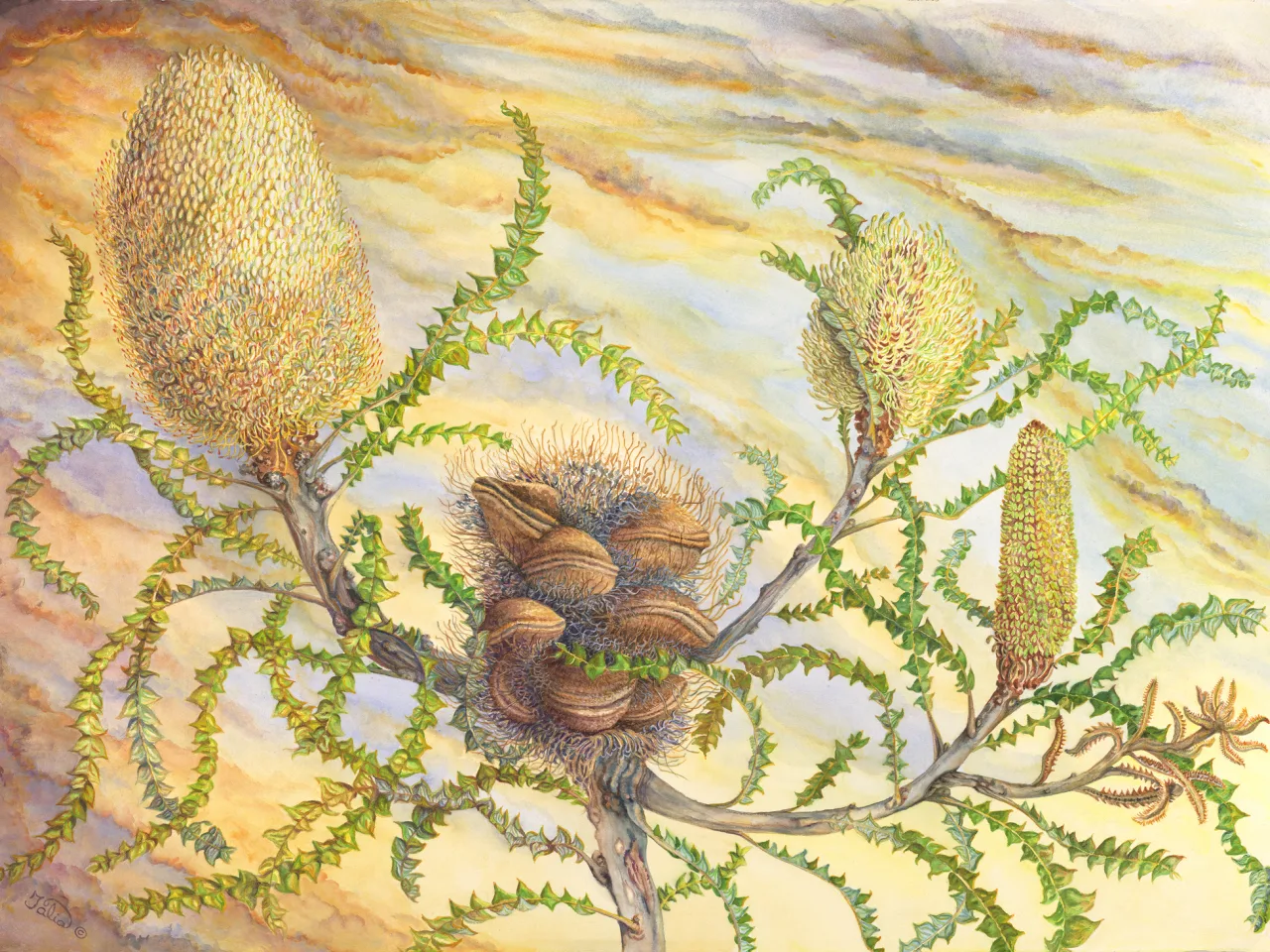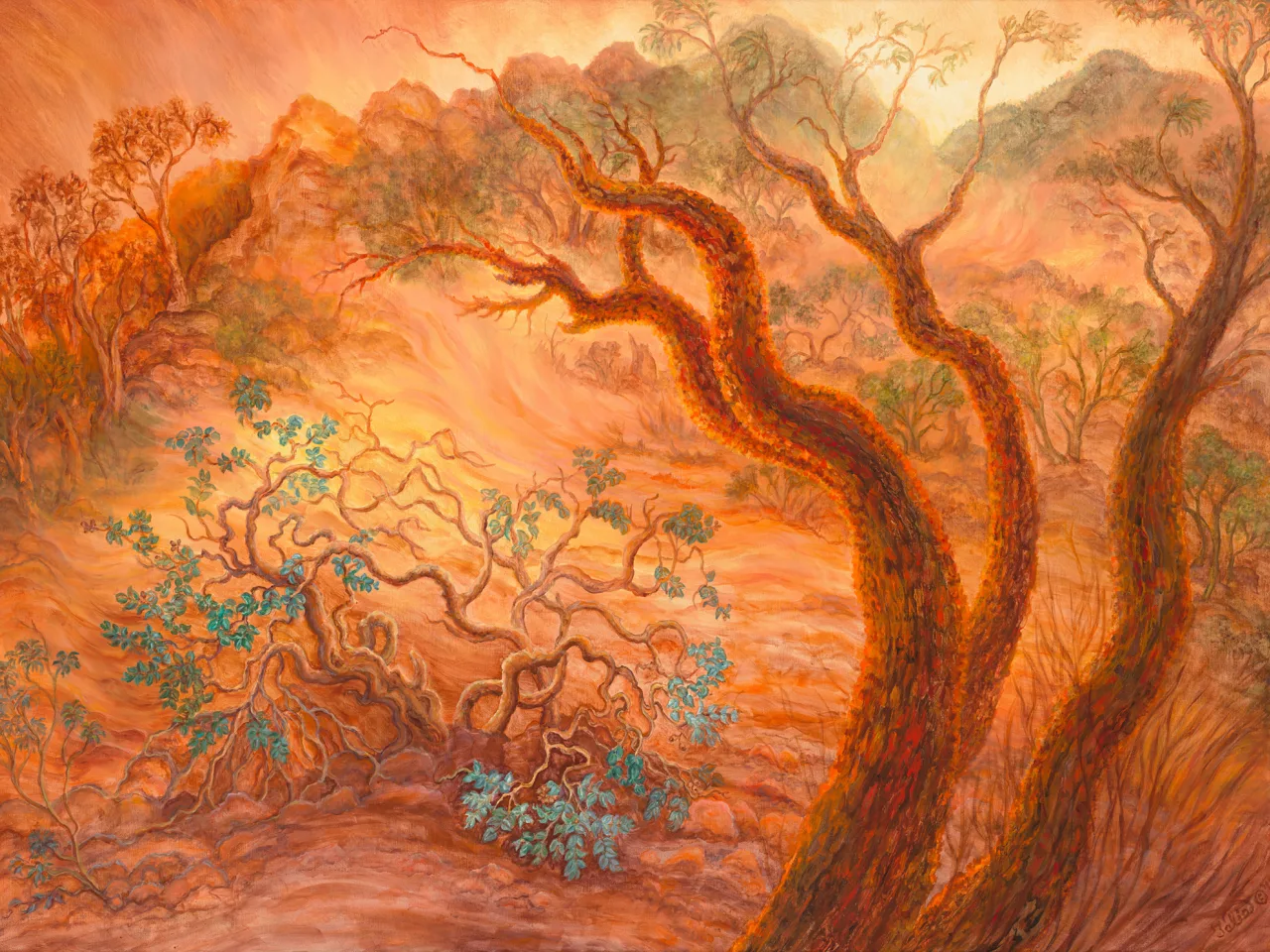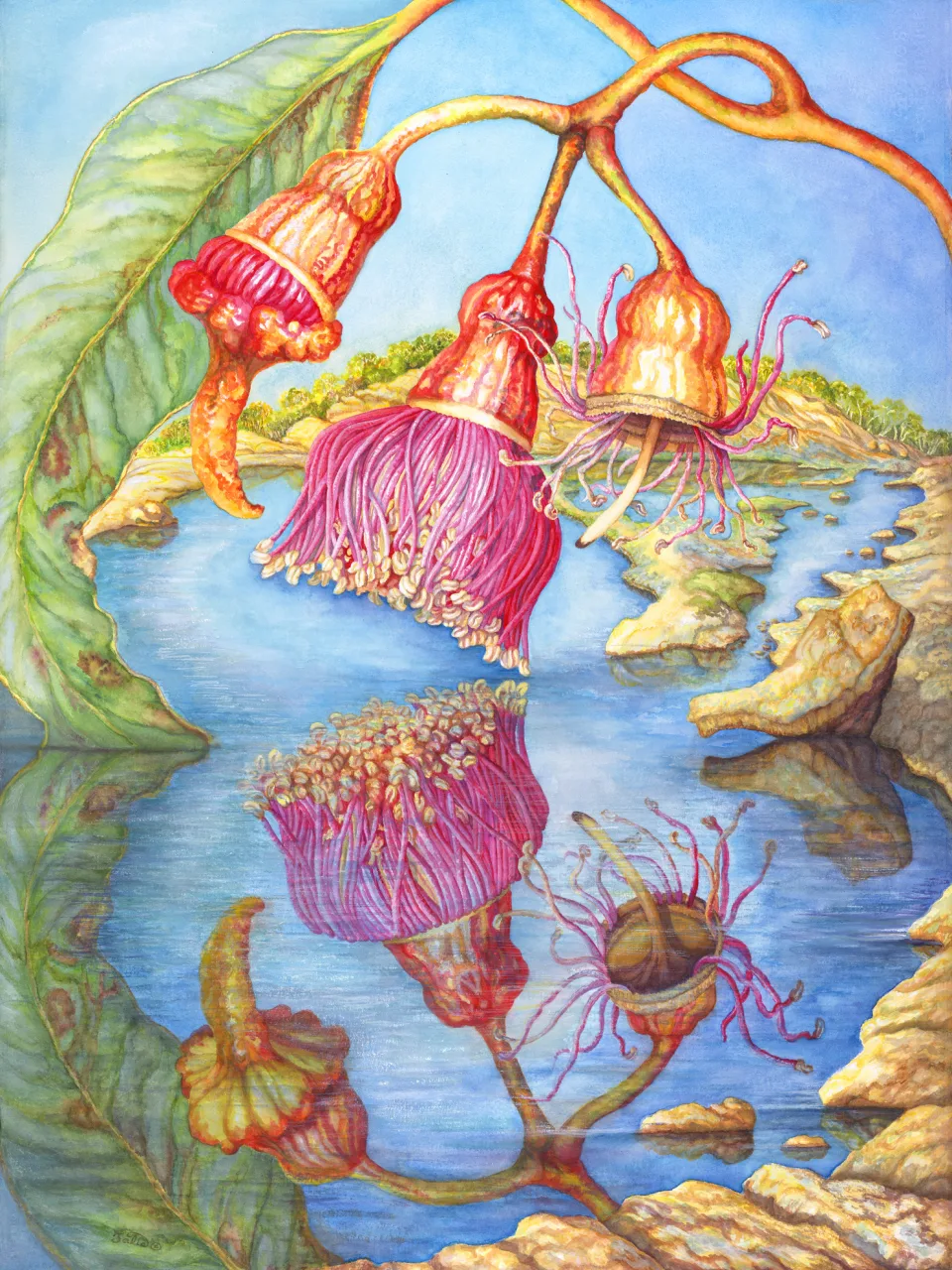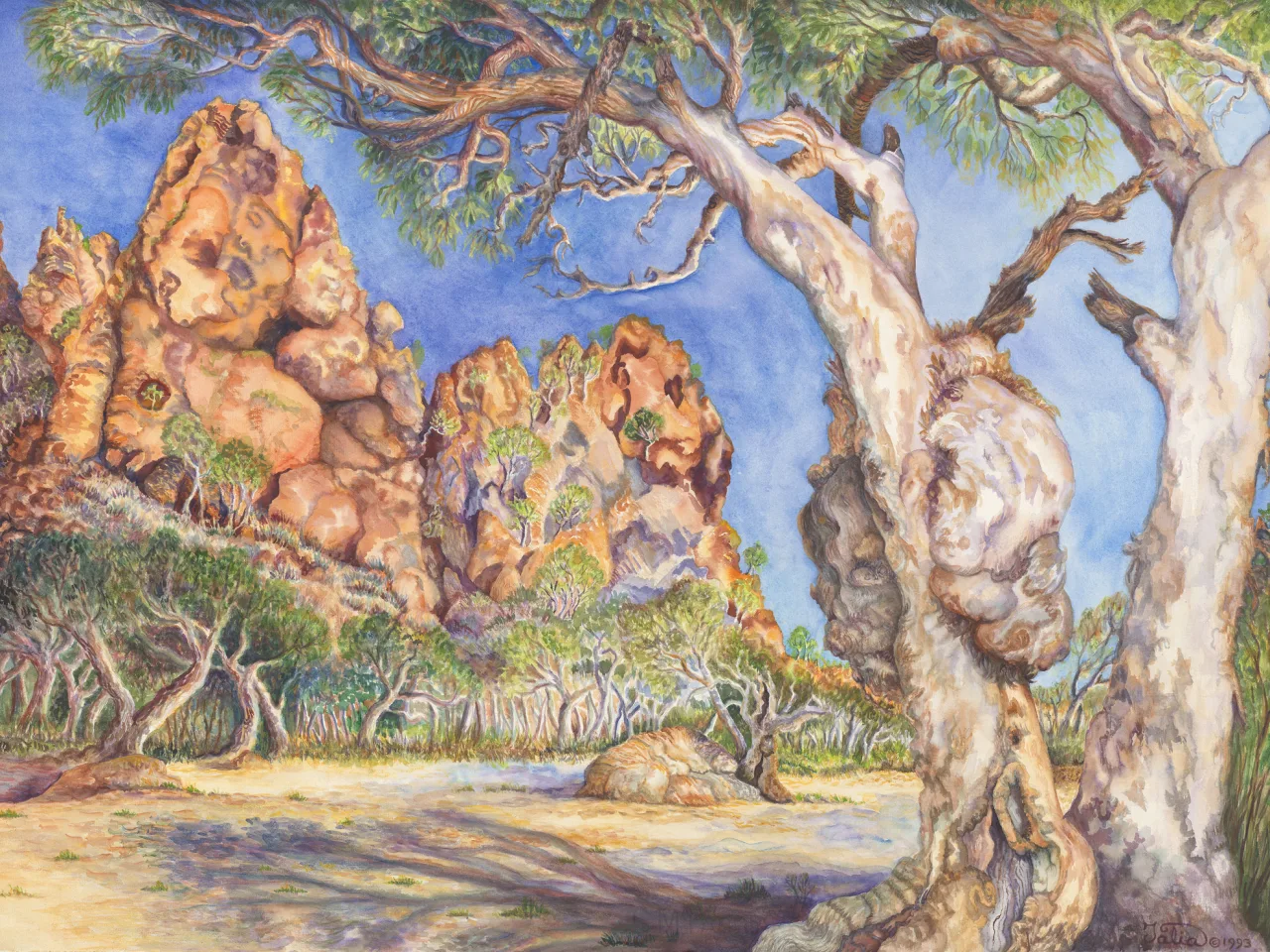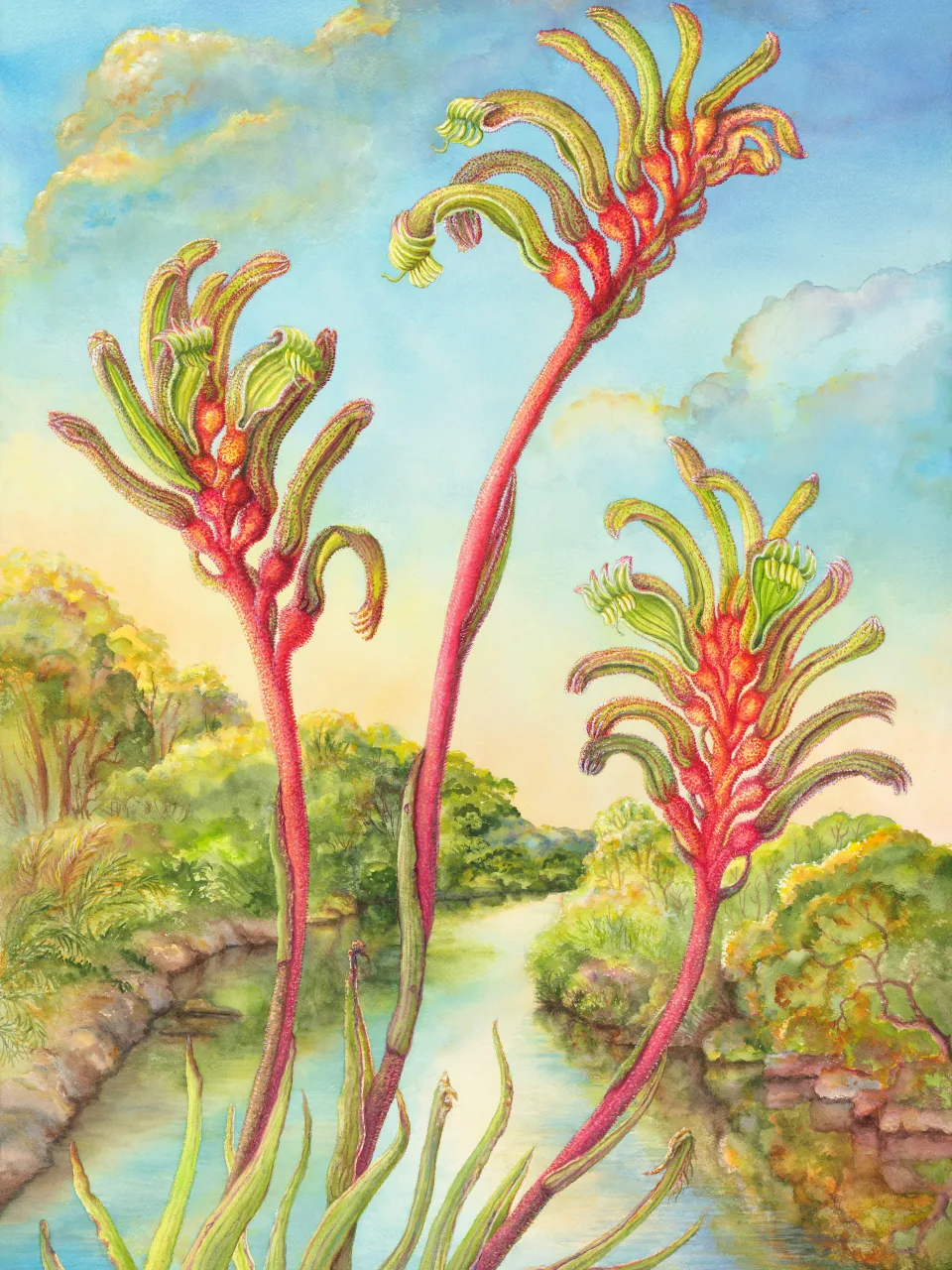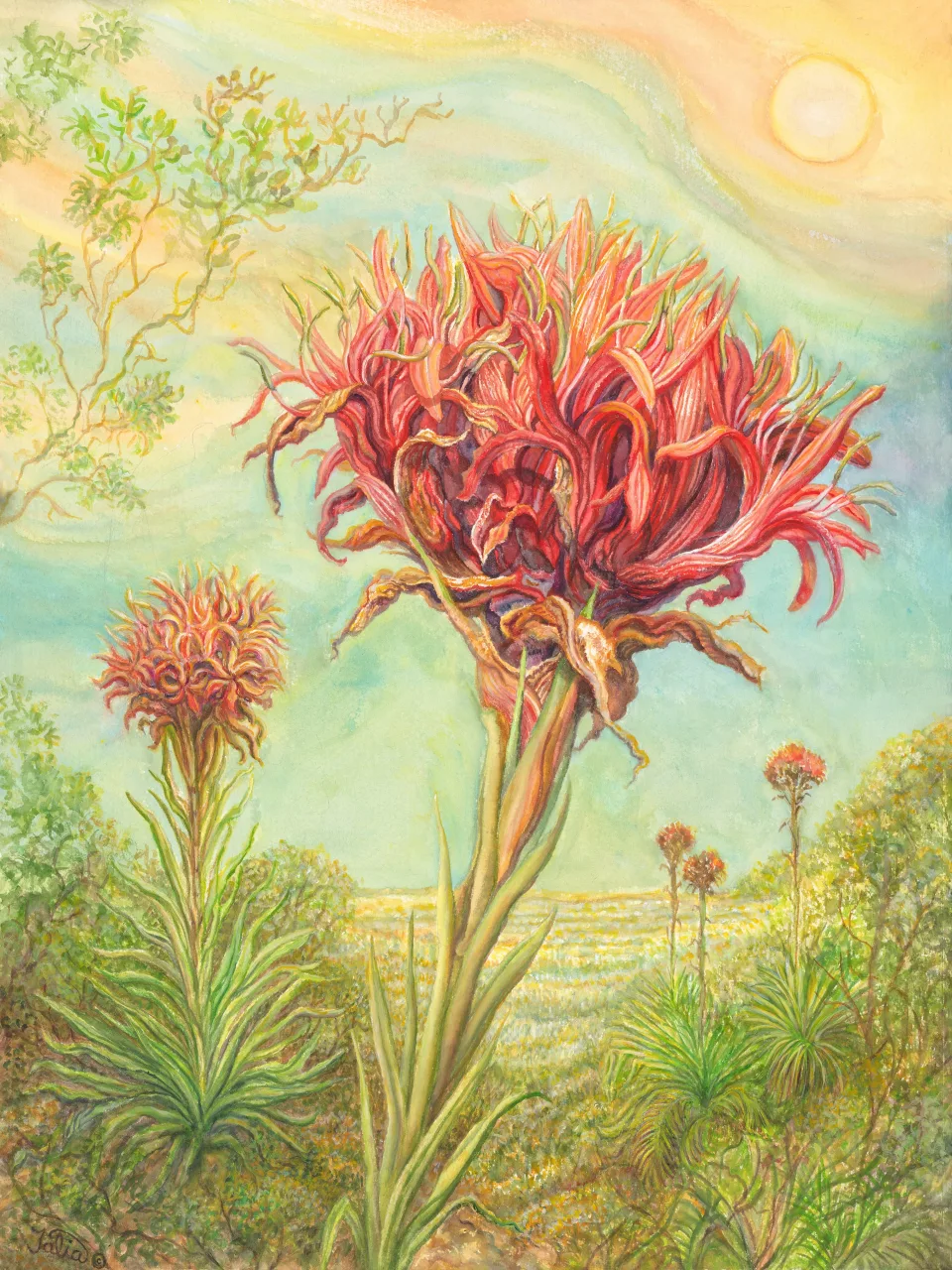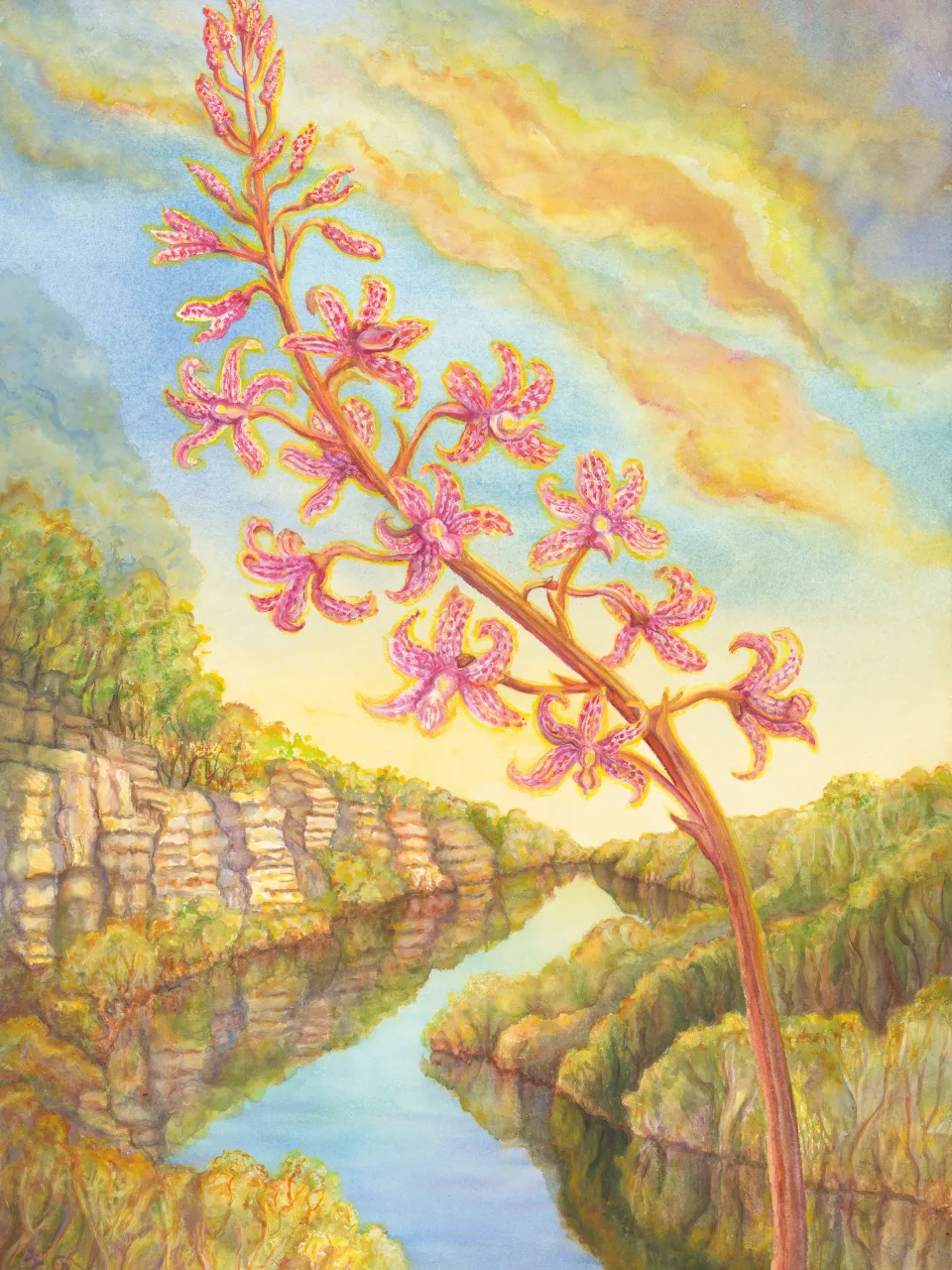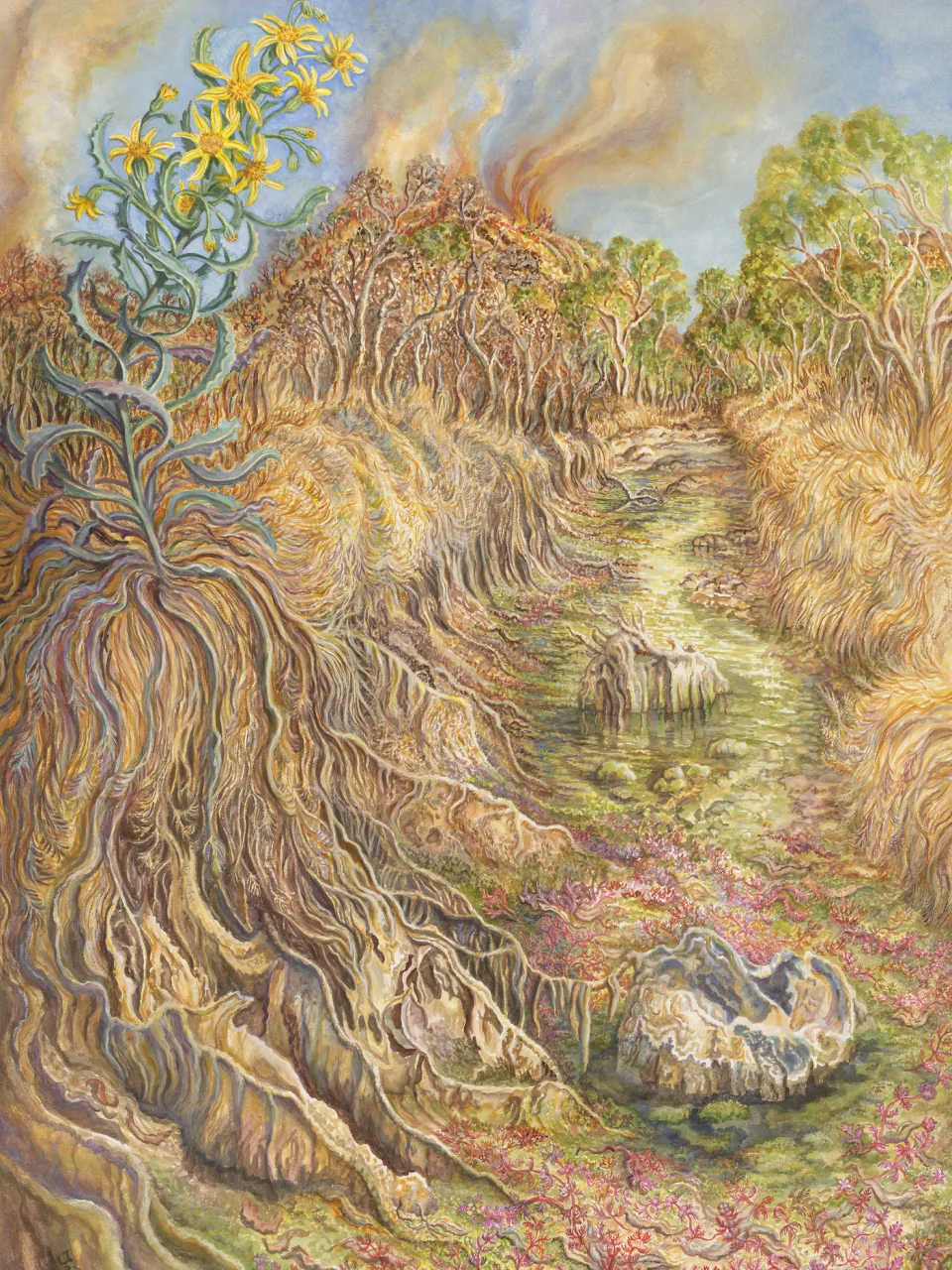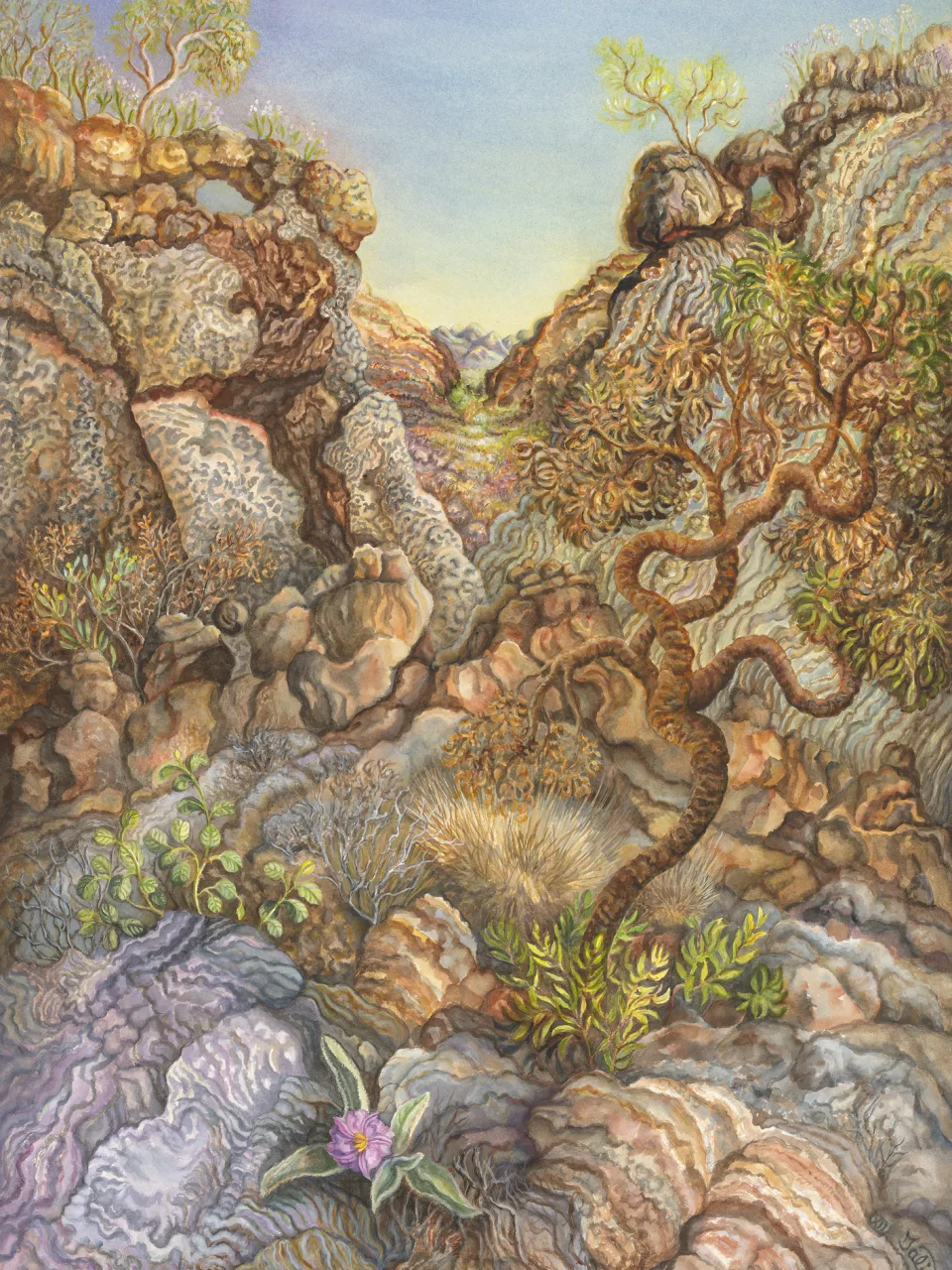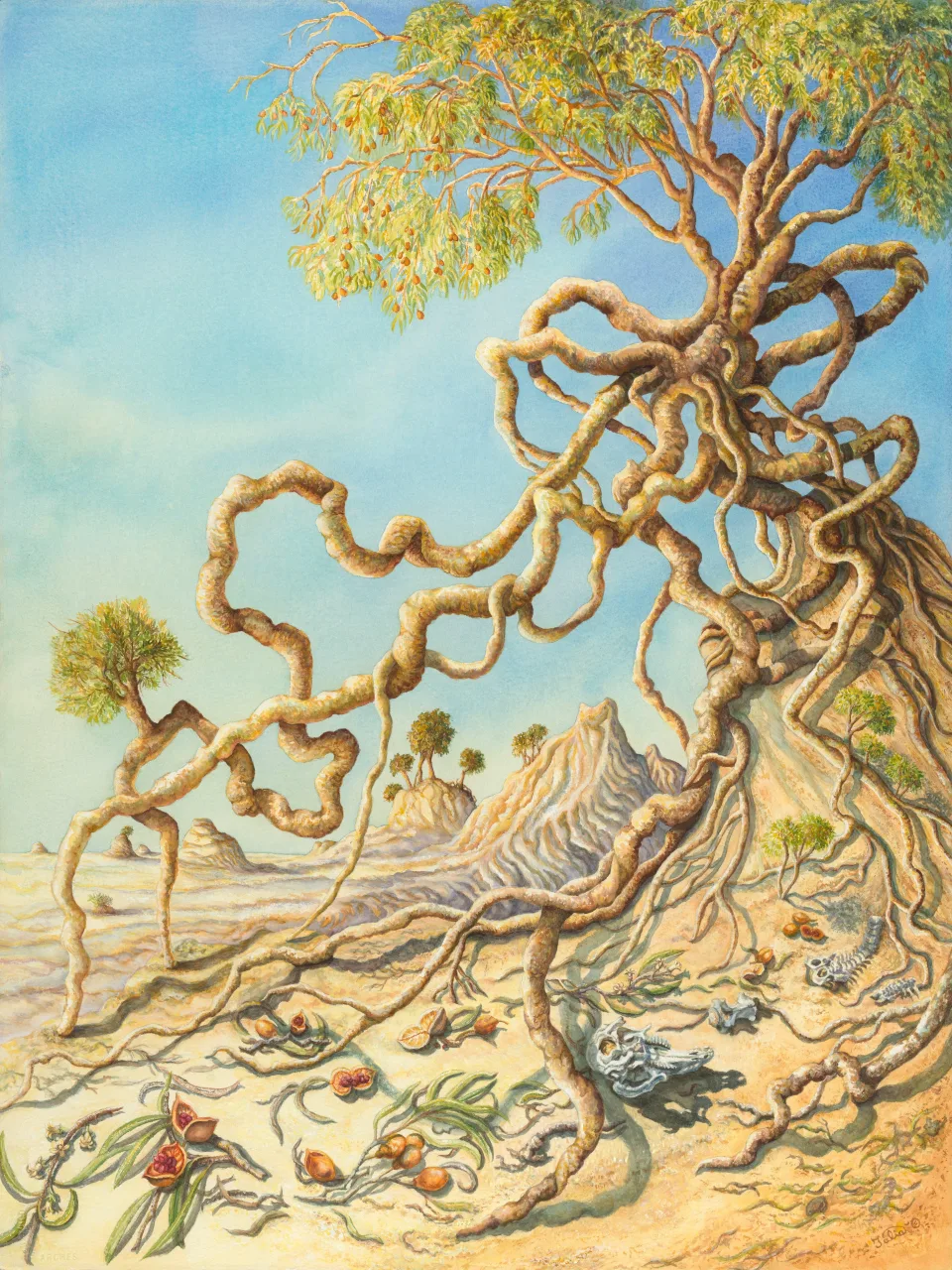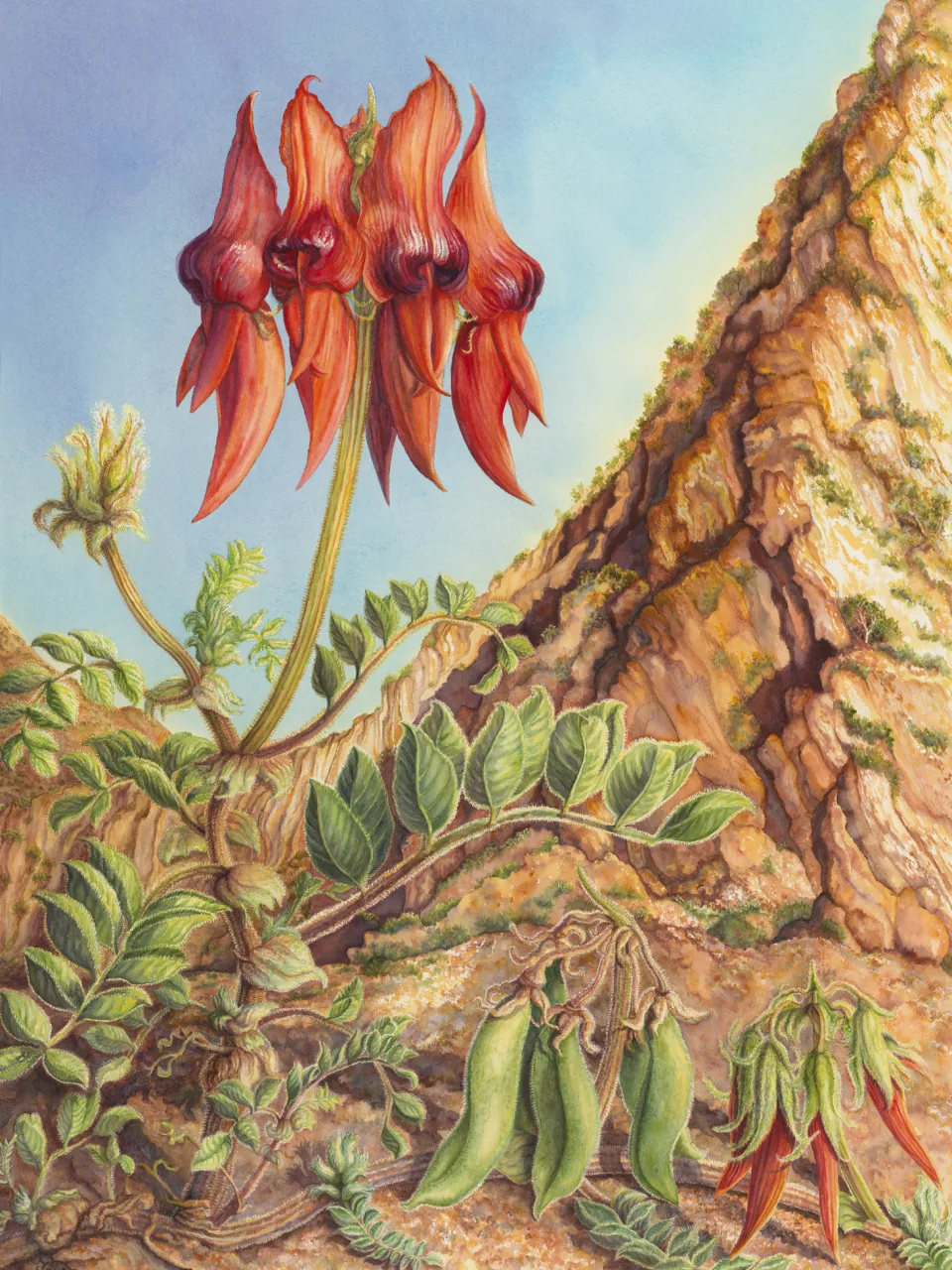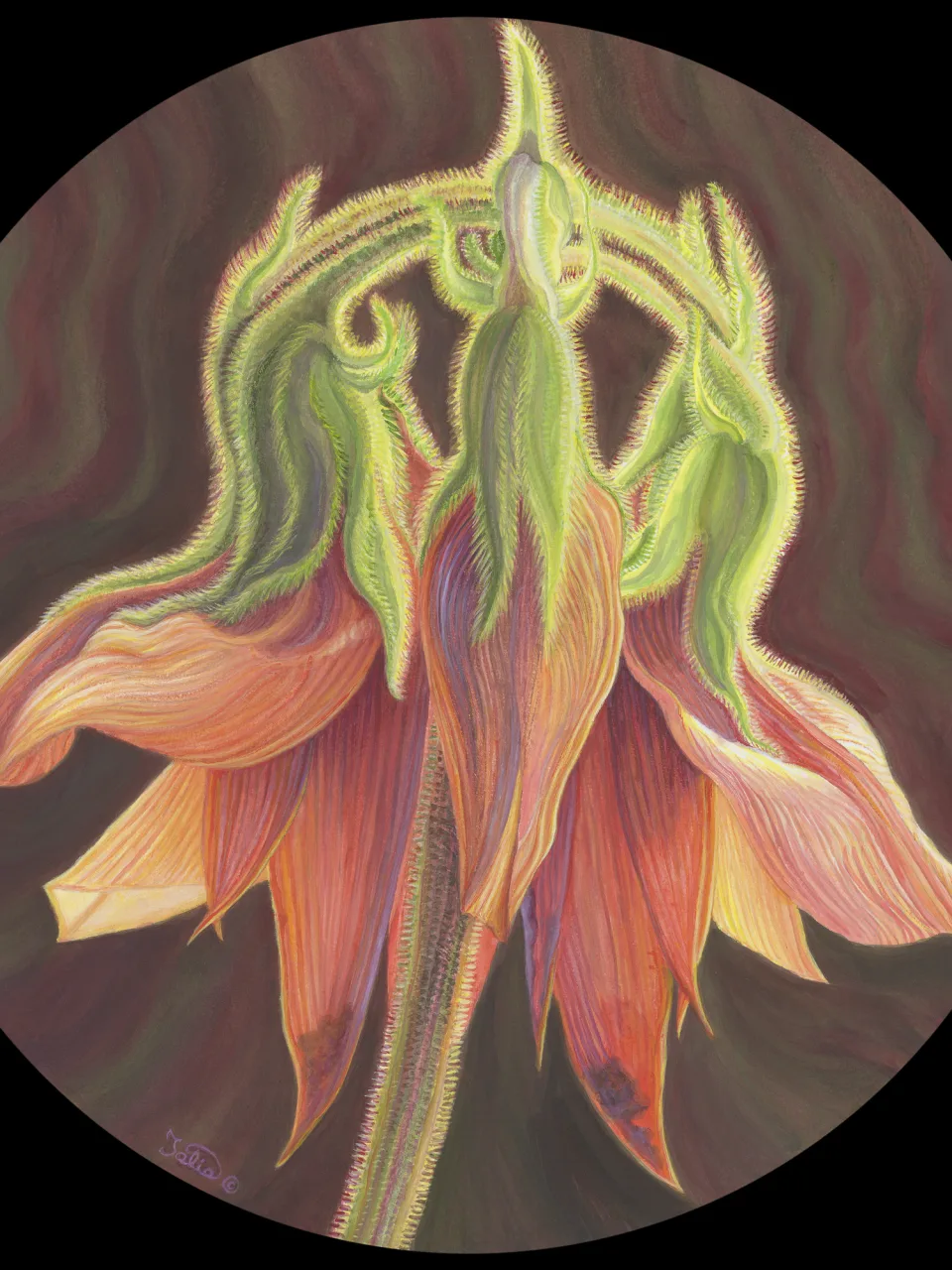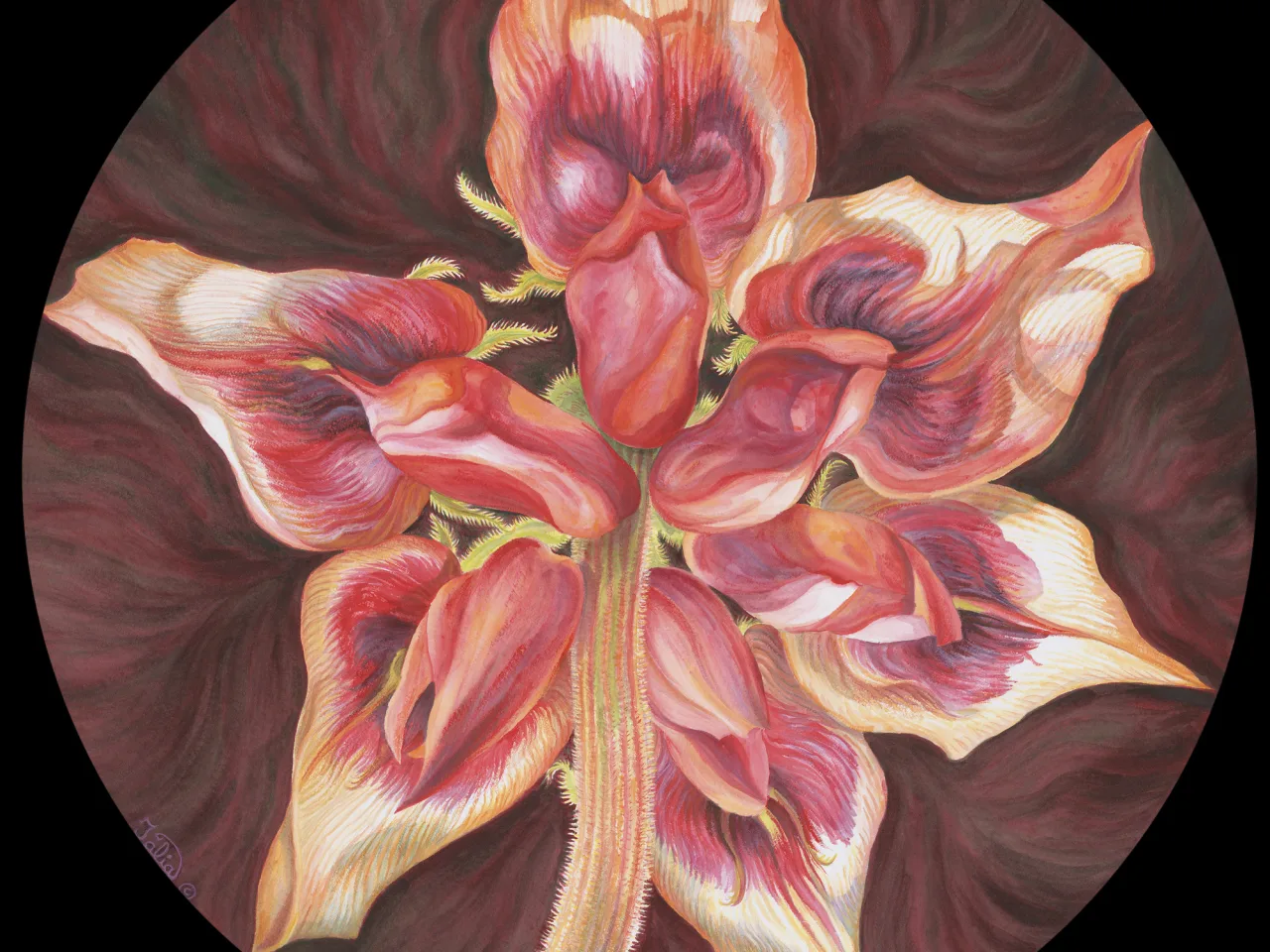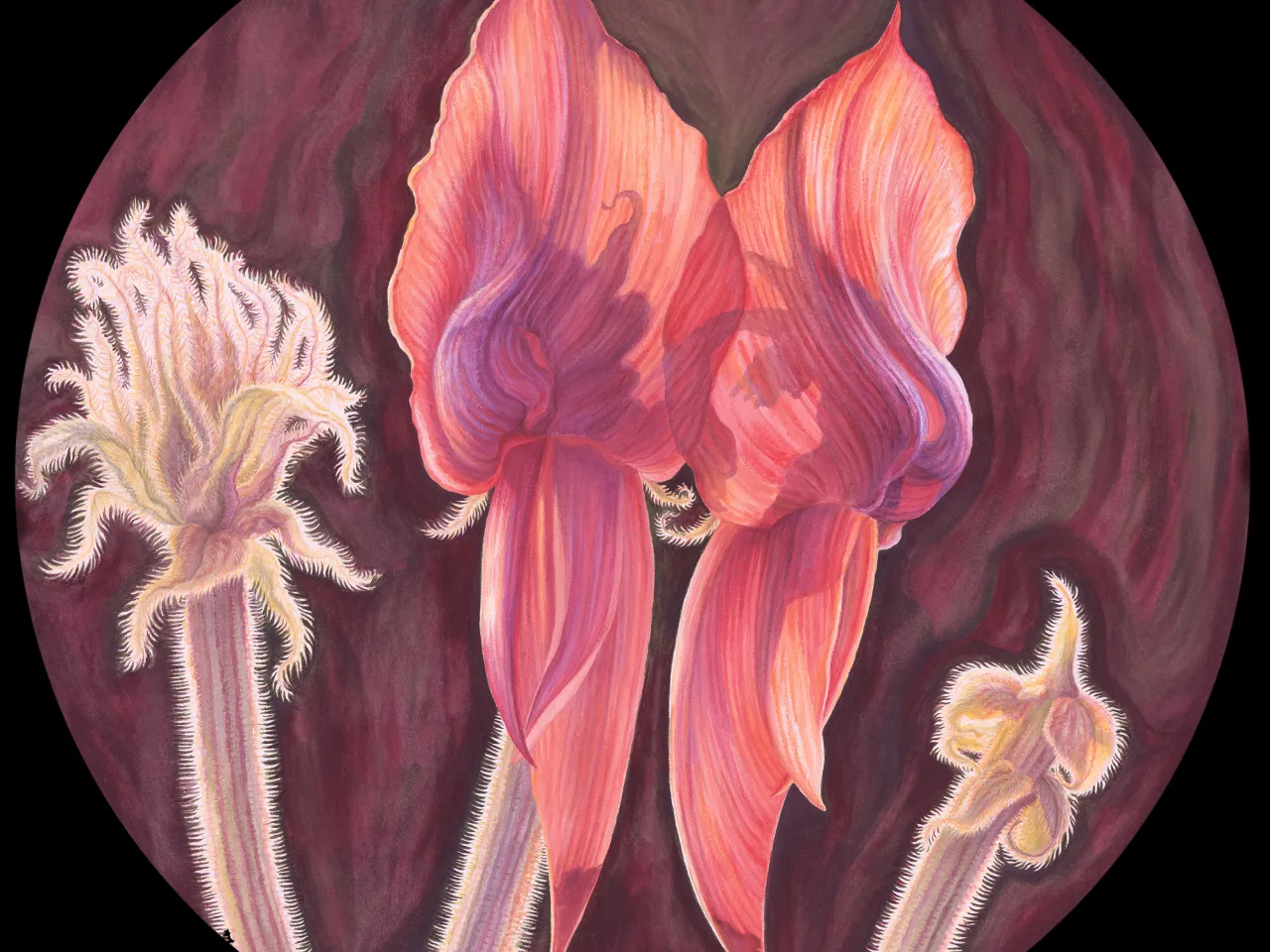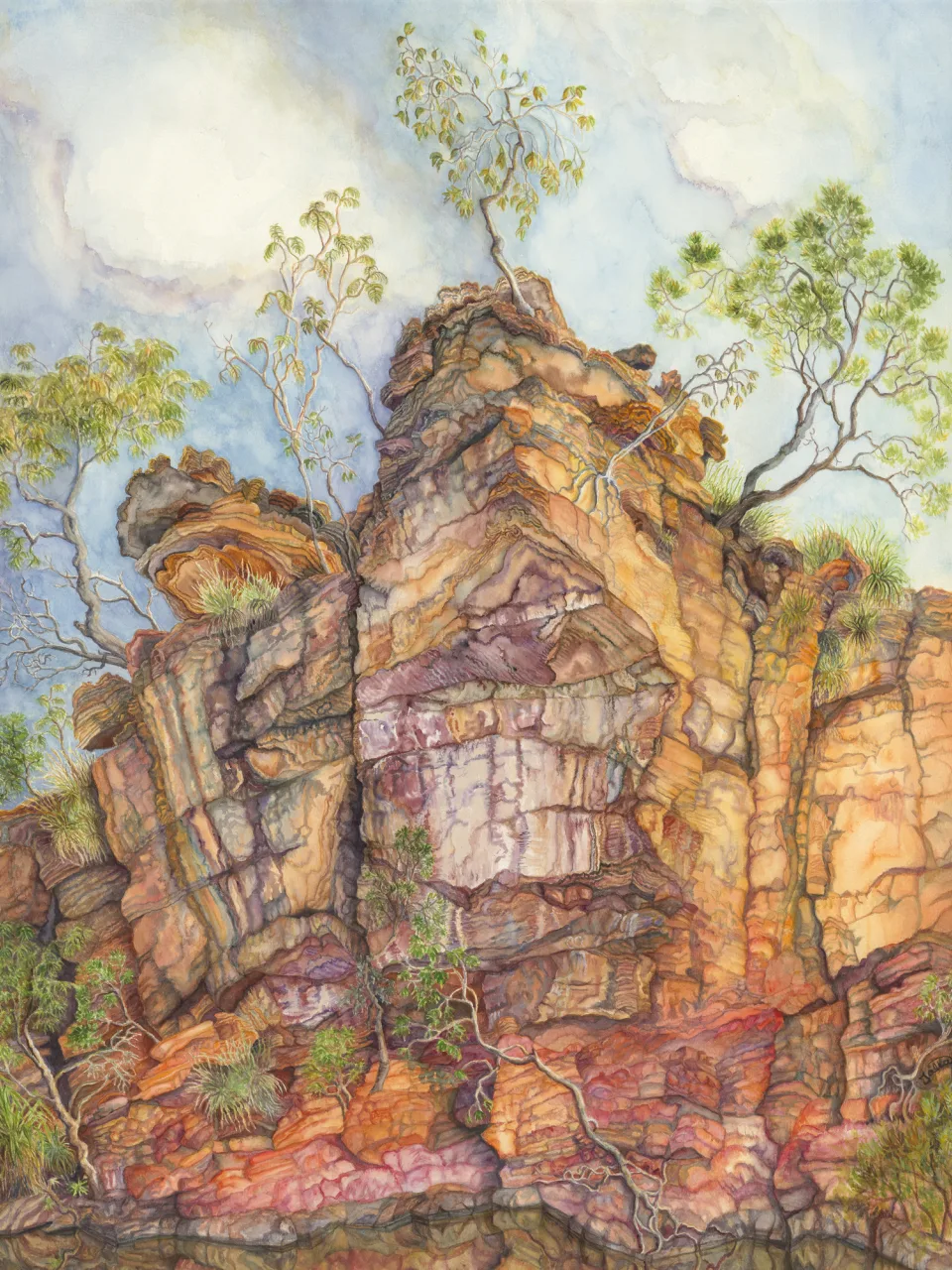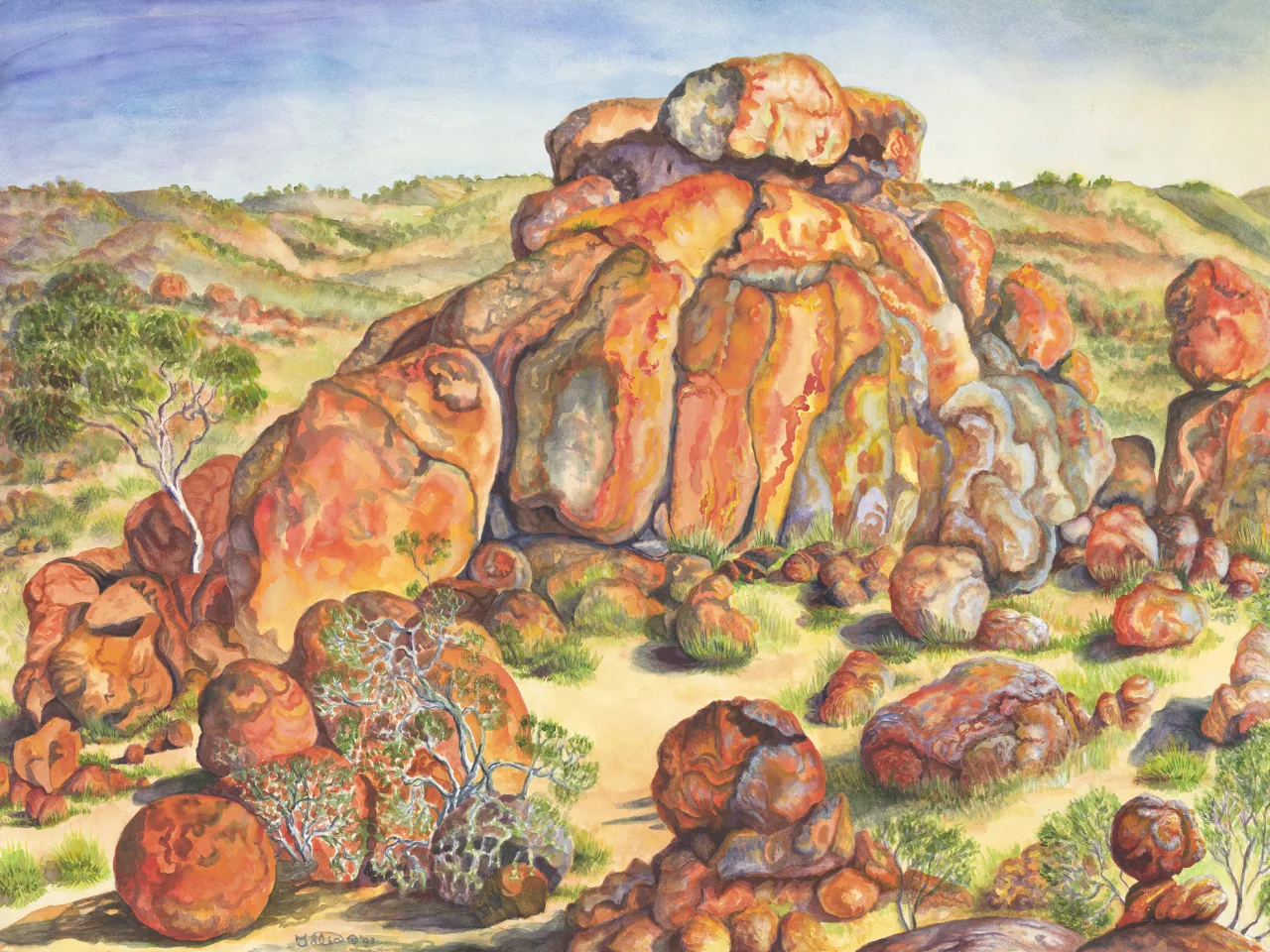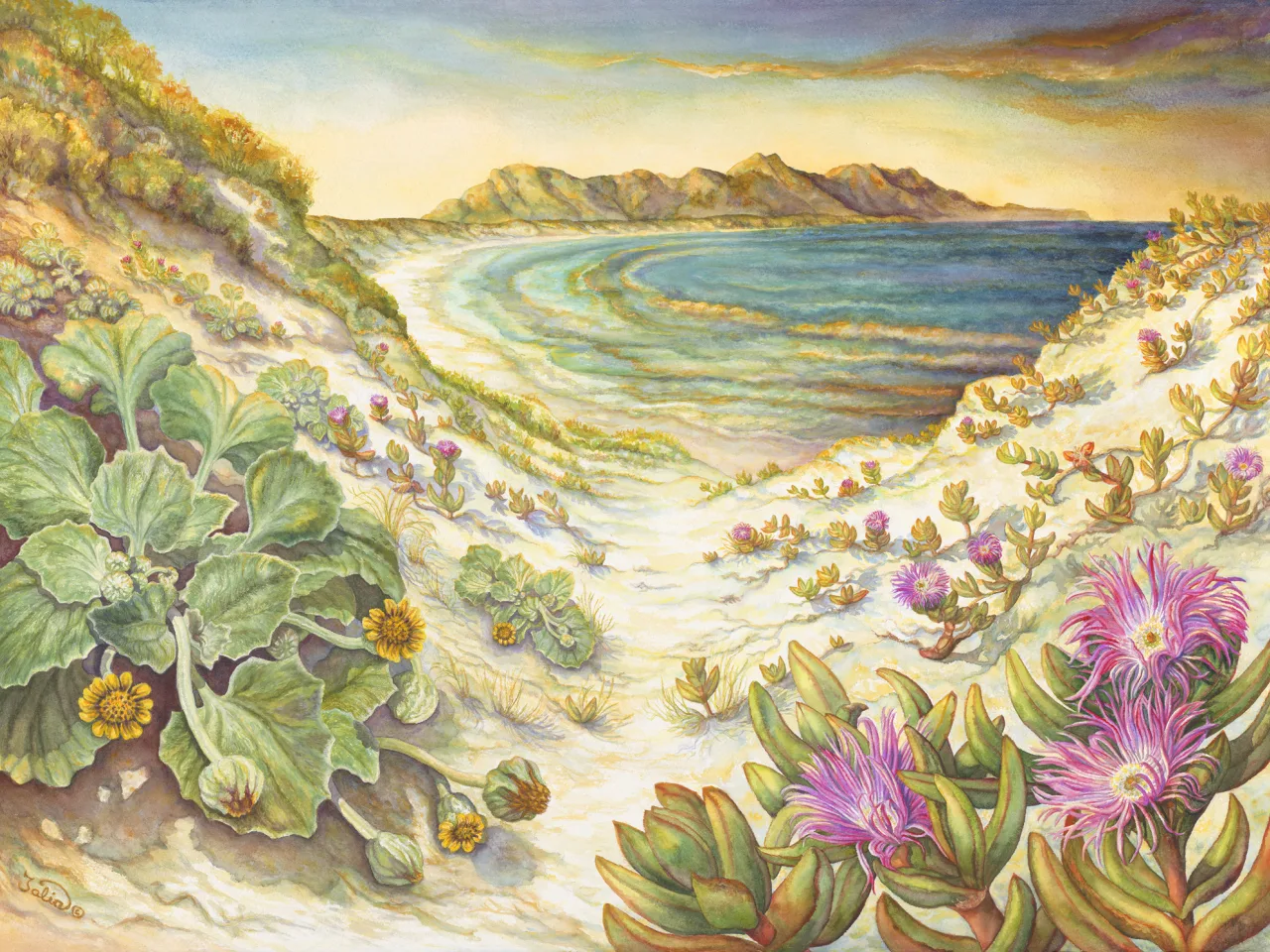Artwork 31 Elephant Ear Wattle and Kapok Trees at Keep River, Northern Territory
Section 22
The Fire-Embracing Proteas of Oz—Waratahs, Grevilleas, Hakeas, Banksias, and Isopogons
Keep River National Park, Northern Territory, Northern Territory
- 1. Acacia dunnii (elephant ear wattle)
- 2. Cochlospermum sp. (kapok tree)
- 3. Grevillea wickhamii subs. aprica (holly grevillea)
Artwork 31
Buy a print
Limited edition giclee archival quality print on 310 gsm Ilford cotton rag (from an original work in watermedia on watercolour board, 76 cm high x 110 cm wide)
from the artist
At Keep River National Park, in the Northern Territory and bordering Western Australia, we cycled and hiked, and generally explored a rugged world of pagoda-like formations and towering cliffs. All turned burnt ochre and orange-red in the late afternoon light. In Elephant Ear Wattle and Kapok Trees at Keep River, Northern Territory are the flowering plants we discovered in nooks and crannies along the rugged dry valley which paralleled a branch of the crocodile-infested Keep River. To the far right is the “holly grevillea” (Grevillea wickhamii subsp. aprica) which we had previously discovered at Kings Canyon (Watarrka National Park) and later found at the MacDonnell Ranges along the Larapinta Trail out of Ellery Creek Big Hole.
There are over 340 species of grevillea, and most are endemic to Australia—with just a few outliers in Papua New Guinea, Sulawesi, and New Caledonia. They are a very diverse genus, ranging from spreading ground covers and shrubs in heaths and sand plains, to tall rainforest trees. Many beautiful cultivars have been developed, such as the famous “Robyn Gordon”, a spontaneous hybrid between two native species in cultivation (Wrigley & Fagg, 1989/1991, p. 320).
Also featured in this work are the unusual large-leaved and aptly named “elephant ear wattle” (Acacia dunnii), and deciduous kapok trees (Cochlospermum sp.), which produce beautiful large yellow flowers from about May to September, when the trees are leafless, as well as large kapok-filled woody capsules.
Patagonia and Australia share many fossils and plants, and in north-west Patagonia fossil flora from 59 mya revealed about 100 species of plants with leaves ranging from tropical and seasonally dry rainforest plants to cool temperate species. Included were both Cochlospermum species and early members of the Proteaceae family (White, 1994/1998, pp. 50).
